2022-23 Hokkaido University
HOKKAIDO UNIVERSITY RANKS 10TH GLOBALLY in THE Impact Rankings 2022
Novel SEX-DETERMINATION mechanism revealed IN MAMMALS
Hokkaido University students presented climate research AT COP 27
Automated chemical reaction prediction: NOW IN STEREO
NEW COVID-19 DRUG developed by Shionogi and Hokkaido University APPROVED IN JAPAN

CONTENTS Satellites capture massive drainage of proglacial lake in remote Patagonia 3 New dinosaur species used fearsome claws to graze along the coast 4 Hokkaido University ranks 10th in the world (and first in Japan) in THE Impact Rankings 6 Sustainability is encoded in the DNA of Hokkaido University 7 Detecting Alzheimer’s disease in the blood 8 A common mechanism for cancer metastasis and atherosclerosis 9 Novel sex-determination mechanism revealed in mammals 10 Deeper understanding of the icy depths 11 COVID-19 RESEARCH AT HOKKAIDO UNIVERSITY 12 Automated chemical reaction prediction: now in stereo 14 The world in grains of interstellar dust 15 Developing antibiotics that target multiple-drug-resistant bacteria 16 All roads lead to big cities 17 Molecular robots work cooperatively in swarms 18 New COVID-19 drug developed by Shionogi & Co. Ltd. and Hokkaido University approved in Japan 19 Hokkaido University students presented Climate Research at COP 27 20 Awards & Recognitions received by Researchers at Hokkaido University 22 Efficient mRNA delivery by branched lipids 23 A warmer Arctic Ocean leads to more snowfall further south 24 Dr. Benjamin List bestowed with the special title Hokkaido University Professor 25 Understanding the Impact of Climate Change 25 Efficient, stable, and eco-friendly thermoelectric material discovered 26 Fields of Knowledge video showcase 27 2022 Akira Suzuki Awards in Chemical Reaction Design and Discovery 27 HOKKAIDO UNIVERSITY AT A GLANCE 28 Cover image Adobe Stock © Mert G.
Satellites capture massive drainage of proglacial lake in remote Patagonia

Only satellites were watching when the world’s fourth-largest proglacial lake suddenly drained in 2020. Hokkaido University researchers now uncovered the event and analysed the cause— the collapse of a sediment bump at the outlet of the lake.
Proglacial lakes form when meltwater from retreating glaciers is trapped by ice or by a moraine left behind by the same or another glacier. A warming climate contributes to the recent global increase in the number and volume of these lakes, and they also themselves contribute to
ORIGINAL ARTICLE
Shuntaro Hata, Shin Sugiyama, Kosuke Heki. Abrupt drainage of Lago Greve, a large proglacial lake in Chilean Patagonia, observed by satellite in 2020. Communications Earth & Environment. August 26, 2022.
FUNDING


JSPS Grant-in-Aid for Scientific Research (20H00186), JST Challenging Research Program for Next-Generation Researchers (JPMJSP2119), and CAS International Fellowship Initiative (2022VEA0014).
CONTACT
Professor Shin Sugiyama Institute of Low Temperature Science

Hokkaido University sugishin@lowtem.hokudai.ac.jp
glaciers melting even faster. These lakes can drain very quickly when the dams that contain them fail. Such a catastrophic event not only poses a direct safety risk for humans, but also influences ecosystems downstream due to the sudden influx of a large amount of freshwater. It is therefore important to monitor proglacial lakes and study their interactions with their surroundings.
Hokkaido University glacier scientist Shin Sugiyama and doctoral student Shuntaro Hata were studying glacier fluctuations in Chilean Patagonia using satellite images,
The lake area (top) and lake level (bottom) dropped precipitously within the span of 4 months in 2020 (Shuntaro Hata, Shin Sugiyama, Kosuke Heki. Communications Earth & Environment. August 26, 2022).



when they noticed that the proglacial lake Lago Greve had shrunk significantly between April and July of 2020. In their publication of these findings in the journal Communications Earth & Environment , they confirmed that the lake’s water level dropped by 18 meters, which translates to a loss of 3.7 cubic kilometers (giga-tonnes) of water. Careful analysis of the satellite imagery and topographic data from before and after the event enabled them to deduce that the cause of the release probably was the collapse of a sediment bump close to the outlet of the lake.
This study opens up many
interesting aspects. First, it points the way for future research on glacial dynamics. Sugiyama explains: “These results provide detailed information on large-scale glacial lake outburst floods, which occur very rarely, and are important for understanding disasters caused by glacial lake failures.” The study provides concrete data that can be used to better understand the dynamics of the interactions between glaciers and the lakes they form, as “the observed changes in the water level of glacial lakes can be used to predict changes in the glacier inflow into the lakes.”
Satellite image of Lago Greve (Greve Lake), Chile, and surrounding landmarks. The area which turned from lake to land surface from 8 April to 1st November 2020 are highlighted in yellow. Areas highlighted in orange and cyan indicate advance and retreat of glacier calving fronts during the same period. The red box (top left) indicates the location of the lake outlet (Shuntaro Hata, Shin Sugiyama, Kosuke Heki. Communications Earth & Environment. August 26, 2022).
HOKKAIDO UNIVERSITY • 3 ENVIRONMENT
New dinosaur species used fearsome claws to graze along the coast
Scientists have described the youngest therizinosaur fossil from Japan and the first in Asia to have been found in marine sediments.
Therizinosaurs were a large group of primarily herbivorous theropod dinosaurs (dinosaurs with hollow bones and three-toed limbs). Therizinosaurs were first discovered in Asia; the fossil records in Asian countries such as China and Mongolia are rich in therizinosaurus fossils, and fossil fragments have also been reported from Japan.
Scientists from Japan and the USA, led by Professor Yoshitsugu Kobayashi at the Hokkaido University Museum and Anthony R. Fiorillo at Southern Methodist University (SMU), have described a new species of therizinosaurid from Japan, and provide new insights into the function of therizinosaur claws. The findings were published in the journal Scientific Reports
Co-authors of the study include Ryuji Takasaki of Okayama University of
Science, Tsogtbaatar Chinzorig of North Carolina State University and Mongolian Academy of Sciences, and Yoshinori Hikida of Nakagawa Museum of Natural History.
The fossil described in this work consists of a partial vertebra and a partial wrist and forefoot, originally collected in 2008 from the Osoushinai Formation, a fossil-rich geological feature in Nakagawa, Hokkaido. At the time, it was described as belonging to a manitoraptan dinosaur, and was believed to belong to a therizinosaur. However, the lack of comparative data at the time made confirmation impraticable.
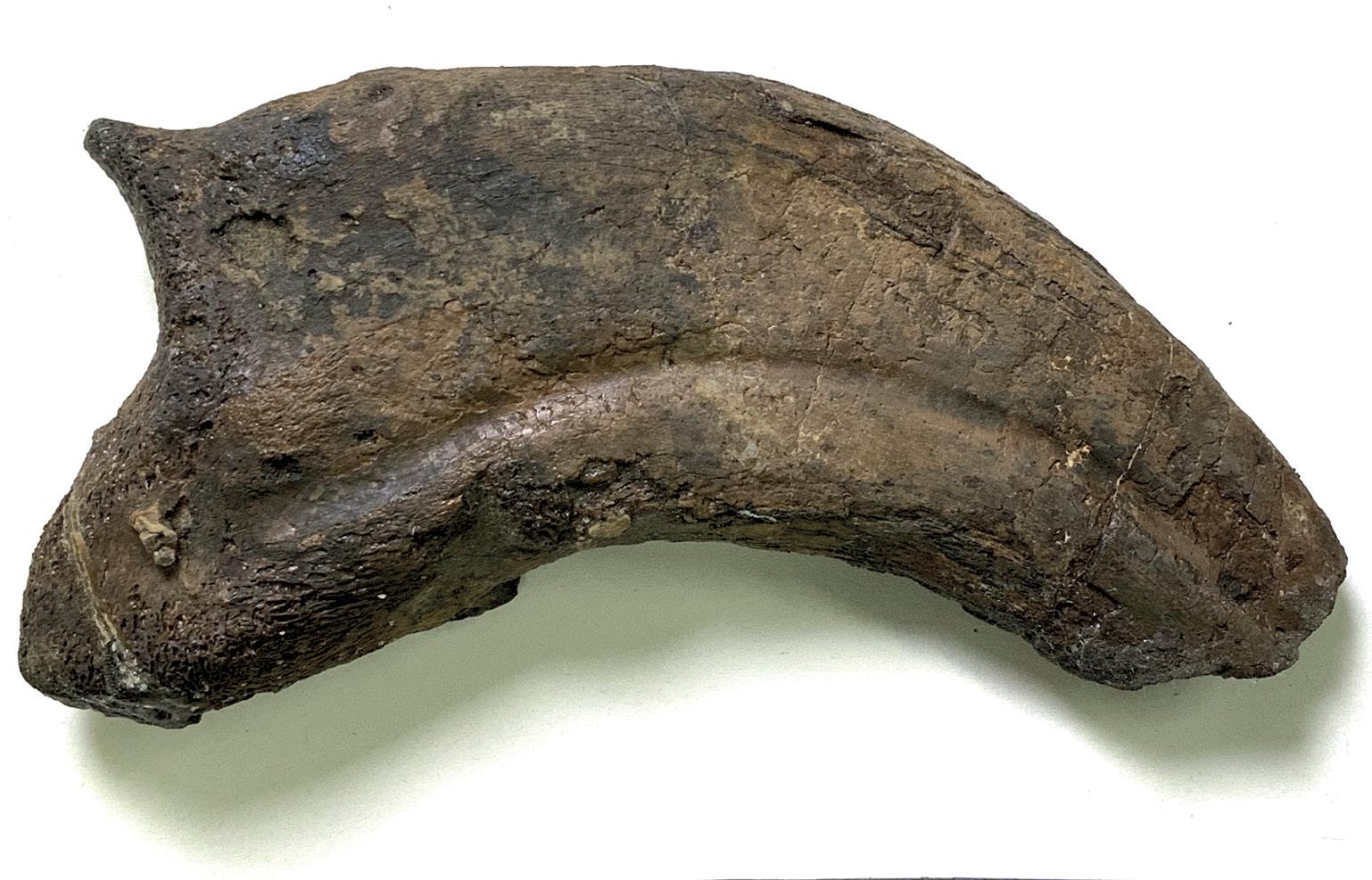
The scientists decided to revisit the specimen as recent developments have led to a wealth of data that allow for the classification of therizinosaurs based on the morphology of the forefoot claws. This
specimen is the third therizinosaur from Japan; however, the first two have not yet been described. Asian therizinosaurs existed from the Early to Late Cretaceous, and possessed enormous claws on their hands. Based on the morphology of these claws, which relates to their function, therizinosaurs are divided into basal therizinosaurs and derived therizinosaurs.
The claws of the new species of therinizosaur, Paralitherizinosaurus japonicus (reaper reptile by the sea from Japan), were compared with claws from many other therizinosaur species. Analysis of the data placed P. japonicus among the derived therizinosaurs based on four shared, derived characters. An analysis of the morphology of the claws, including their length and shape of the base of the claws, indicate that the claws of basal
1 cm 4 • HOKKAIDO UNIVERSITY PALEONTOLOGY
One of the three fossilized claws of Paralitherizinosaurus japonicus in the current study (Photo: Yoshitusgu Kobayashi).
“This study also tells us how much more we still have to learn about the incredible history of life on Earth.”
therizinosaurs are generalized and not for specific use, while the claws of derived therizinosaurs were specialised to hook and pull vegetation to the mouth for grazing.
Paralitherizinosaurus japonicus is the youngest

occurrence of therizinosaur remains in Japan. Its discovery indicates that therizinosaurs in Asia existed over a much longer timescale, and a much larger geographical area, than previously known. It is also the first therizinosaur record
from marine sediments in Asia. Along with a fossil from Utah, USA, this suggests that some of the derived therizinosaurs were adapted to coastal environments.
“This study also tells us how much more we still have to learn about the incredible history of life on Earth,” said Fiorillo, a research professor in SMU’s Roy M. Huffington Department of Earth Sciences; a senior research fellow at SMU’s ISEM; and curator emeritus of the Perot Museum of Nature and Science.
ORIGINAL ARTICLE
Yoshitsugu Kobayashi, et al. New therizinosaurid dinosaur from the marine Osoushinai Formation (Upper Cretaceous, Japan) provides insight for function and evolution of therizinosaur claws. Scientific Reports. May 3, 2022.
CONTACT
Professor Yoshitsugu Kobayashi Hokkaido University Museum Hokkaido University ykobayashi@museum.hokudai. ac.jp
Claws and life reconstruction of Paralitherizinosaurus japonicus. The white regions on the silhouette indicate recovered fossils: a partial vertebra and a partial left forefoot; grey indicates the reconstructed areas of the claws. (Illustration: Genya Masukawa).
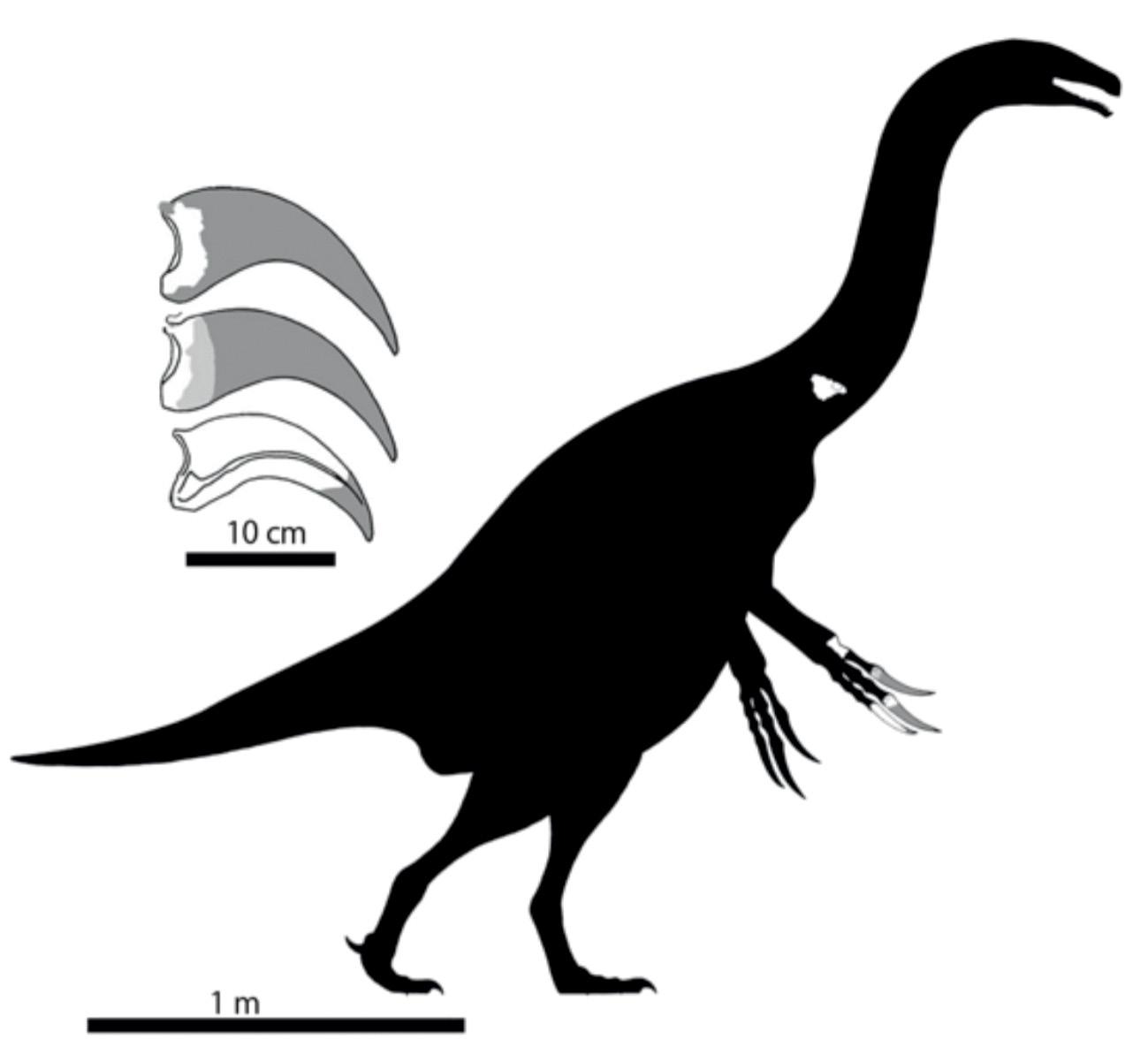
Research Professor Anthony

R. Fiorillo
Roy M. Huffington Department of Earth Sciences
Southern Methodist University fiorillo@mail.smu.edu

HOKKAIDO UNIVERSITY • 5
An artist’s rendition of Paralitherizinosaurus japonicus, the new dinosaur species described in this study (Illustration: Masato Hattori).
HOKKAIDO UNIVERSITY RANKS 10TH IN THE WORLD (AND 1ST IN JAPAN)
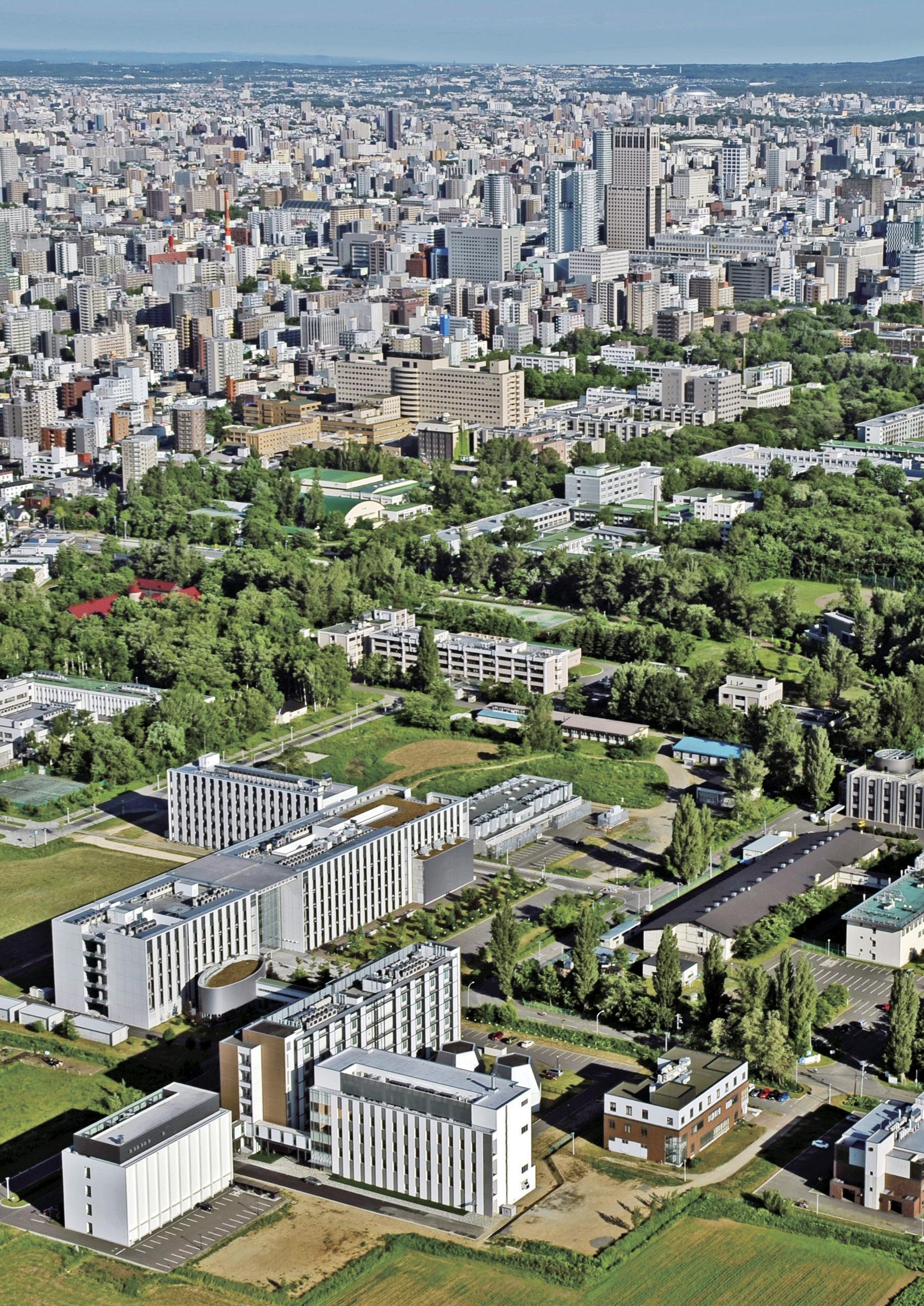
in THE Impact Rankings 2022
Times Higher Education, a UK-based higher education magazine, released THE Impact Rankings 2022 on April 27, 2022. Hokkaido University has become the first university in Japan to be ranked within the top 10 in the overall global ranking, out of the 1406 universities that entered the ranking, and 1st in the world in the category of SDG 2: Zero Hunger. The THE Impact Rankings assess universities’ contributions to achieving the United Nations’ Sustainable Development Goals (SDGs). Participating universities are evaluated based on submitted data and metrics from external sources.
Out of the 17 SDG targets, Hokkaido University was ranked within the global top 100 in the following categories; SDG 2: Zero Hunger (1st), SDG 17: Partnerships for the Goals (12th), SDG 14: Life Below Water (17th), SDG 15: Life on Land (18th), SDG 9: Industry, Innovation and Infrastructure (43rd), SDG 16: Peace, Justice and Strong Institutions (61st), and SDG 6: Clean Water and Sanitation (92nd).
“I am very pleased with this result, which I believe is a recognition of the University’s longstanding efforts to achieve the SDGs,” said Hokkaido University President Kiyohiro Houkin. “Hokkaido University was founded in 1876 as the Sapporo Agricultural College, and it has had strengths in food production, field science, and environmental sciences since its inception. We were the first National University to address sustainability by developing a Campus Master Plan in 1996, and we have made a number of progressive efforts toward SDGs since then, culminating in the establishment of the Institute for the Advancement of Sustainability last year. The University will continue to make further efforts to ensure a sustainable society for future generations.”
Sustainability is encoded in the DNA of Hokkaido University



Hokkaido University was established in 1876 as Sapporo Agricultural College, the first modern university in Japan. Its purpose was to develop agricultural production technologies in cold regions — which were necessary to turn Hokkaido, the northern-most region of the country, into a major food production center — and to foster human resources to put these technologies into practice. To this end, the Japanese government of the time appointed William Smith Clark, then-president of Massachusetts Agricultural College in the US, as vice-principal of the college.
The university has developed into one of the largest universities in Japan, covering almost all disciplines including natural and social sciences as well as humanities. It possesses a wide variety of research facilities throughout Hokkaido, including experimental farms and ranches, extensive research forests, training ships, and aquatic research stations. With a total area of about 70,000 hectares, the research forests are among the largest in the world.
With this rich educational and research environment, and the abundant nature of Hokkaido as a backdrop, the university has become prominent in field research related to agriculture, forestry, fisheries, and environmental sciences. The “Clark spirit” of independence, self-reliance and self-establishment has not faded away in the 145 years since its founding; it continues to live on in all members of the university through the four basic principles of “frontier spirit”, “global perspectives”, “all-round education” and “practical learning”. Hokkaido University’s mission has been to build a sustainable society through the resolution of local issues right from its establishment. With this background, Hokkaido University has implemented many initiatives that contribute to the achievement of the United Nations’ Sustainable Development Goals (SDGs). In particular, efforts toward SDG 2 (zero hunger) are the most fundamental area of the university, as it started as an agricultural college.
The Global Center for Food, Land, and Water Resources conducts cutting-edge research on securing sustainable food, water, and land resources, and sends students to research institutions and international organizations with the aim of nurturing future leaders with broad perspectives.
A multitude of efforts toward SDG 2 is also being made at the Research and Education Center for Robust Agriculture, Forestry and Fisheries Industry, known as the “Robust
Center”. The Robust Center aims to make the food value chain more robust by incorporating the concept of industrial engineering into agriculture, forestry and fisheries. Improving productivity and profitability of these industries, developing and implementing next-generation technologies, and fostering the next-generation professionals are also missions of the center. Moreover, it works with local businesses on projects to solve various problems and actively organizes science and technology workshops and conferences on the application of technology in fisheries and agriculture.
The spirit of independence has taken root among our students. They independently organize Hokkaido University Marché – an annual event that connects Hokkaido residents with agriculture producers from all over the region, enabling producers and consumers to interact directly. Students also actively participate in the Hult Prize , an SDGs-oriented global entrepreneurship competition; one of the Hokkaido teams was selected as a regional representative.
Hokkaido University is an early adopter of the concept of sustainability. In 1996, it became the first national university in Japan to adopt a “Campus Master Plan”, which aimed to maintain various historical and cultural assets and the rich ecological environment on campus. In 2005, a headquarters was established to evolve the concept of sustainable development into a university strategy, and in August 2021, a new organization, the Institute for the Advancement of Sustainability, headed by the university’s president, was established to further advance efforts towards the SDGs.
The tutelage that Hokkaido University received from the world leader Professor Clark 145 years ago has flourished, and the university has now been highly rated in the prestigious Times Higher Education Impact Rankings 2022 Times change, challenges change, but we are still halfway to a sustainable society. Hokkaido University will remain at the forefront of building a new society, hand in hand with the rest of the world, and will continue to strive to be a university that contributes to the world’s efforts toward achieving the SDGs.
Atsushi Yokota, Ph.D. Executive Vice President International Affairs, SDGs Hokkaido University
Detecting Alzheimer’s disease in the blood
Researchers from Hokkaido University and Toppan have developed a method to detect build-up of amyloid β in the brain, a characteristic of Alzheimer’s disease, from biomarkers in blood samples.
Alzheimer’s disease is a neurodegenerative disease, characterised by a gradual loss of neurons and synapses in the brain. One of the primary causes of Alzheimer’s disease is the accumulation of amyloid β (Aβ) in the brain, where it forms plaques. Alzheimer’s disease is mostly seen in individuals over 65 years of age, and cannot currently be stopped or reversed. Thus, Alzheimer’s disease is a major concern for nations with ageing populations, such as Japan.
A team of scientists from Hokkaido University and Toppan, led by Specially Appointed Associate Professor Kohei Yuyama at the Faculty of Advanced Life Science, Hokkaido University, have developed a biosensing technology that can detect
A β -binding exosomes in the blood of mice, which increase as Aβ accumulates in the brain. Their research was published in the journal Alzheimer’s Research & Therapy
In addition to the lack of effective treatments of Alzheimer’s, there are few methods to diagnose Alzheimer’s. Alzheimer’s can only be definitively diagnosed by direct examination of the brain— which can only be done after death. A β accumulation in the brain can be measured by cerebrospinal fluid testing or by positron emission tomography; however, the former is an extremely invasive test that cannot be repeated, and the latter is quite expensive. Thus, there is a need for a diagnostic test that is economical, accurate and widely available.
Previous work by Yuyama’s group has shown that A β build-up in the brain is associated with A β -binding exosomes secreted from neurons, which degrade and
transport Aβ to the microglial cells of the brain. Exosomes are membrane-enclosed sacs secreted by cells that possess cell markers on their surface. The team adapted Toppan’s proprietary Digital Invasive Cleavage Assay (Digital ICATM) to quantify the concentration of Aβ-binding exosomes in as little as 100 µL of blood. The device they developed traps molecules and particles in a sample one-by-one in a million micrometer-sized microscopic wells on a measurement chip and detects the presence or absence of fluorescent signals emitted by the cleaving of the Aβ-binding exosomes.
When tested on mice models, the A β -binding exosome Digital ICATM (idICA) showed that the concentration of A β -binding exosomes increased with the increase in age of the mice. This is significant as the mice used were Alzheimer’s disease model mice, where A β builds up in the brain with age.
ORIGINAL ARTICLE
Kohei Yuyama, et al. ImmunoDigital Invasive Cleavage Assay for Analyzing Alzheimer’s Amyloid β-Bound Extracellular Vesicles. Alzheimer’s Research & Therapy. October 3, 2022.
FUNDING Toppan Inc. (PC86180005).
CONTACT
Associate Professor Kohei Yuyama

Faculty of Advanced Life Science
Hokkaido University
kyuyama@sci.hokudai.ac.jp
Clinical trials of the technology are currently underway in humans. This highly sensitive idICA technology is the first application of ICA that enables highly sensitive detection of exosomes that retain specific surface molecules from a small amount of blood without the need to learn special techniques; as it is applicable to exosome biomarkers in general, it can also be adapted for use in the diagnosis of other diseases.

8 • HOKKAIDO UNIVERSITY MEDICINE
Concept for digital detection of amyloid β-binding exosomes in the blood of an Alzheimer’s disease model mouse (Kohei Yuyama).
A common mechanism for cancer metastasis and atherosclerosis
A key molecule for cancer metastasis has been identified as a molecule already known for its involvement in cardiovascular disease, suggesting a possible treatment approach for both diseases simultaneously.
Cancer is the uncontrolled growth of body cells leading to the formation of tumors, triggered by the accumulation of mutations in a cell’s genome. In order to become malignant, metastasizing cancer, tumor cells go through a series of transformations involving interactions between the body’s immune system and the tumor. However, many mechanistic details in this process are still unclear, making the prevention and treatment of cancer notoriously difficult. However, there is growing evidence that in tumor progression to metastasis,
ORIGINAL ARTICLE
Takuya Tsumita, et al. The oxidized-LDL/LOX-1 axis in tumor endothelial cells enhances metastasis by recruiting neutrophils and cancer cells. International Journal of Cancer. May 24, 2022.
FUNDING JSPS Grants-in-Aid for Scientific Research (JP21J1332401, JP18K09715, JP18H02891, JP18H02996, JP21H04840) and AMED (JP18ck0106198h0003, JP19ck0106406h0002).
CONTACT
Professor Kyoko Hida Graduate School of Dental Medicine

Hokkaido University khida@den.hokudai.ac.jp
inflammation of blood vessel-lining “endothelial” cells is a key process.
Concerned with the molecular mechanism behind this process in cancer malignancy, a team of researchers led by Professor Kyoko Hida at Hokkaido University have discovered that, in malignant tumors, endothelial cells accumulate a lipid delivery molecule called “low-density lipoprotein” (LDL) and attract immune cells called “neutrophils.” Neutrophils are immune suppressor cells which are known to contribute to tumor progression. The discovery was published in the International Journal of Cancer
Previous work by the team had revealed that blood vessels in malignant tumors expressed a high level of proteoglycans, and it is known that cancerous tissue is inflamed. These features are similar to what is seen in atherosclerosis, and the team wished to investigate if the similarities went deeper.

The research team showed that metastasizing tumors, in contrast to non-metastasizing ones, accumulate proteoglycan molecules; these, in turn, attach to and accumulate LDL to the walls of blood vessels. The bound LDL becomes oxidized. There are also high levels of its receptor, called “LOX-1”, in the blood vessel-lining endothelial cells of metastasizing tumors. This, they found, causes these cells to produce inflammation signals that attract neutrophils. They then proved that in mice,
the suppression of LOX-1 can significantly reduce tumor malignancy, and also that LOX-1 overexpression caused an increase in signaling molecules attracting neutrophils.
As the team hypothesized, this sequence of interactions observed in malignant tumors is not novel: it occurs in atherosclerosis, the hardening of blood vessels. “Atherosclerosis and cancer appear to be completely different diseases, but they share several common pathophysiological features in the blood vessels,” says Kyoko Hida.
Even though some questions remain open, especially on the mechanism of how neutrophils contribute to cancer malignancy, this study is the first to explicitly prove the mechanistic commonalities between cardiovascular disease and cancer progression and trace the mechanism
involving LDL accumulation and LOX-1 expression in in-vivo tumor tissue. “Our present study focused on the importance of LOX-1 in endothelial cells as a common factor between cancer and atherosclerosis,” Hida explains. “The presence of neutrophils in tumors is a telltale sign of tumor progression.”
The study also points to a promising approach for treating and preventing malignant cancer—and cardiovascular disease—by targeting neutrophil recruitment to endothelial cells. Hida concludes: “The number of patients with cancer who die not of cancer, but of cardiovascular events, is increasing. Targeting the LOX-1/oxidized LDL axis might be a promising strategy for the treatment of the two diseases concomitantly.”
HOKKAIDO UNIVERSITY • 9 MEDICINE
Oxidized-LDL accumulates (left column) in malignant tumors (bottom) much more than in non-malignant ones (top). This attracts neutrophils (right column, red) to malignant tumors (bottom), but not to nonmalignant ones (top; Takuya Tsumita, et al. International Journal of Cancer. May 24, 2022).
ORIGINAL ARTICLE
Miho Terao, Yuya Ogawa, et al. Turnover of mammal sex chromosomes in the Sry-deficient Amami spiny rat is due to male-specific upregulation of Sox9 Proceedings of the National Academies of Sciences November 28, 2022.
FUNDING
JSPS KAKENHI (16H06279, 26113701, 19H03267, 22H02667).
CONTACT
Professor Asato Kuroiwa Faculty of Science
Hokkaido University
asatok@sci.hokudai.ac.jp
Novel sex-determination mechanism revealed in mammals
The Sox9 gene is upregulated in the absence of sex-determining Y chromosome and Sry gene in Amami spiny rat.
In mammals, the distinction between male and female at the chromosomal level is due to the X and Y chromosomes. Typically, females have two X chromosomes (XX) while males have an X and a Y chromosome (XY). The Sry gene on the Y chromosome triggers the formation of the testes. However, there exist a handful of rodent species in which the Y chromosome has disappeared, taking with it the Sry gene. The mechanism by which testes development occurs in these species is not fully understood, and is subject to much research.
A team of researchers led by Professor Asato Kuroiwa at Hokkaido University has uncovered the genetic basis for sexual differentiation in the Amami spiny rat, one of the species that lacks a Y chromosome and the Sry gene. Their discoveries were published in the journal Proceedings of the National Academy of Sciences
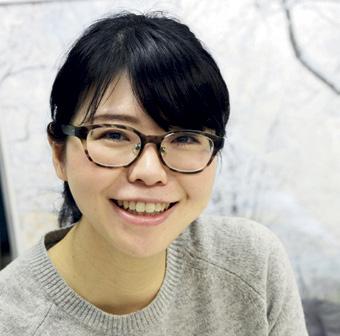
The Amami spiny rat is an endangered rodent found only on Amami Oshima, Japan. It is one of just four mammals known to lack a Y chromosome, alongside its close relative the Tokunoshima

spiny rat, as well as the Transcaucasian mole vole and the Zaisan mole vole. In the Amami spiny rat, the Sry gene is completely absent; thus, it has evolved a novel, unknown sex-determining mechanism independent of Sry
The research team collected tissue samples from three male and three female Amami spiny rats, and used them to generate genome sequences for each individual. Intensive analysis unveiled a DNA sequence duplication that was present only in the males. This duplicated region was located upstream of the gene Sox9 on chromosome 3.
In mammals, Sox9 is the target of Sry, and is responsible for the differentiation of the testes. It has been studied in detail, and many regulatory elements that control the expression of Sox9 are known.
The researchers revealed that the sequence duplication in Amami spiny rats was a new regulatory element, which upregulated Sox9 in the absence of Sry. They were able to map its position on the chromosomes relative to Sox9 , and confirmed that
it was similar to a potential Sox9 enhancer in mice called Enh14. They hypothesise that the two copies of Enh14 work in concert to upregulate the expression of Sox9. When they introduced the sequence into mice genomes by gene editing technology, the female (XX) mice embryos showed a gene expression that induced testis formation.
This study is the first discovery of a male-specific genetic element directly related to sex-determining mechanism in mammals that is independent of Sry. It shows that the the sex-determination mechanism in the Amami spiny rat has moved to chromosome 3, an autosome — the first example of a translocation of sex-determination mechanism in mammals. Future work will focus on investigating the exact mechanism by which Enh14 acts, as well as identifying other elements of this novel mechanism. However, it is unknown if this mechanism can be extended to all four rodent species that lack a Y chromosome, especially to the distantly related mole voles.
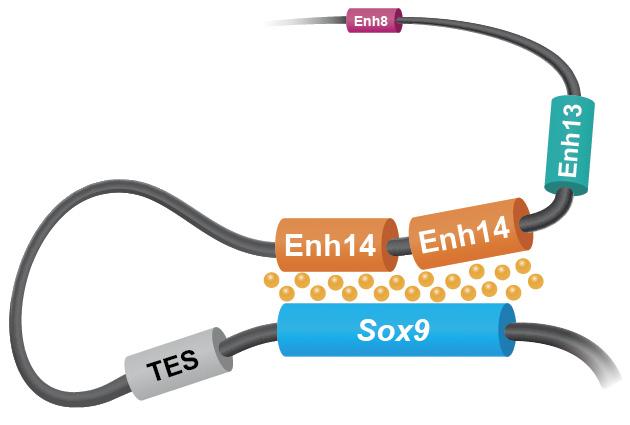
10 • HOKKAIDO UNIVERSITY EVOLUTION
In the Amami spiny rat, the Enh14 region is duplicated. The two copies of Enh14 act in concert to upregulate Sox9, which causes the differentiation of the testes. TES, Enh13 and Enh8 are other regulators of Sox9 (Miho Terao, Yuya Ogawa, et al. Proceedings of the National Academy of Sciences. November 28, 2022).
“... the first discovery of a male-specific genetic element directly related to sexdetermining mechanism in mammals that is independent of Sry.”
Deeper understanding of the icy depths
Scientists have uncovered new details of how ice forming below the ocean surface in Antarctica provides cold dense water that sinks to the seabed in an important aspect of global water circulation.
The results, published in the journal Science Advances , come from a team at the Hokkaido University’s Institute of Low Temperature Science, its Arctic Research Center, and the Faculty of Fisheries science, working with scientists at Japan’s National Institute of Polar Research and Aerospace Exploration Agency.

The seas around Antarctica, where a large amount of sea ice is formed, are central to global ocean water circulation, linking the Atlantic, Pacific, and Indian oceans. When sea ice is formed, it rejects salt, therefore leaving dense, cold water that sink to the seabed. This water, called Antarctic Bottom Water (AABW), is the coldest and densest water mass in the global circulation, flooding across most of the deep seafloor known as the global abyss. Since the global ocean circulation influences the global climate, it is important
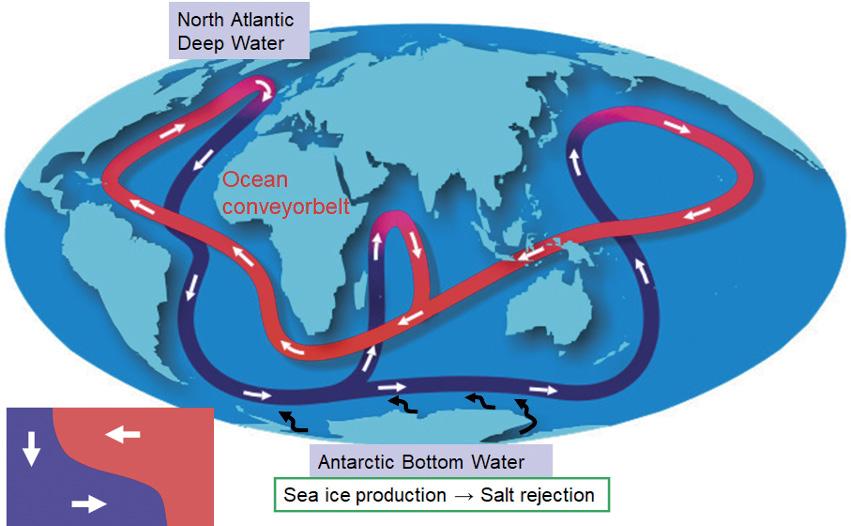
Around the coast of Cape Darnley, frazil ice forms efficiently under the sea surface particularly due to the strong wind and resulting heat loss. When Frazil ice forms, it generates cold, dense water which sinks to the seabed forming Antarctic Bottom Water (AABW) (Kay I. Ohshima, et al. Science Advances October 19, 2022).
to understand the mechanism of AABW formation and how the formation will be impacted by global warming.
“We found surprising new results about the form of sea ice growth in a key AABW production site, close to Cape Darnley in Antarctica, with potentially wide implications for other areas,” says Kay Ohshima of the Hokkaido team. He explains that satellite monitoring and data from moored sensors in the ocean revealed the importance of underwater ice called Frazil ice in producing dense cold water. This ice forms beneath the surface when water is cooled to below its freezing point by the cooling effect of the strong wind and turbulent conditions. The cooling can occur to surprising depths of 80 metres or more.
Their key significance is that they involve an area where water is cooled by strong wind
from severely cold Antarctica, especially in open water areas within the pack ice called polynyas.
“It is important to learn that such a major process is occurring underwater, revealing an aspect of the circulation system that has been at least partially obscured from view,” Kay says.
The researchers also suggest that the frazil ice could incorporate the sediment at the sea bottom and release it as the ice melts. This may yield new understanding of the circulation of nutrients that fertilize plankton to influence the general biological productivity of Antarctic waters.

“Our next step is to incorporate these new processes into understanding of Southern Ocean biogeochemistry and carbon circulation, which will require significant new fieldwork and research,” Ohshima concludes.
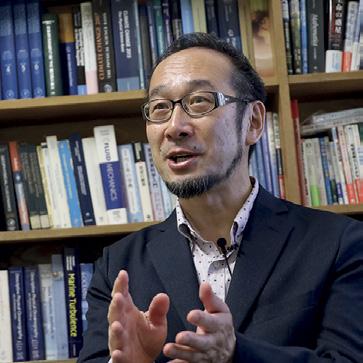
ORIGINAL ARTICLE
Kay I. Ohshima et al. Dominant frazil ice production in the Cape Darnley polynya leading to Antarctic Bottom Water formation. Science Advances October 19, 2022.
FUNDING
MEXT Grants-in-Aids for Scientific Research (20221001, 25241001, 17H01157, 17H06317, 20H05707, 20K20933, 21H04931); the Science Program of JARE (AP05); the Global Change Observation Mission Water 1 of JAXA (ER2GWF404 and ER3AMF424); ESA (project ID 6130); NIPR through Project Research (KP-303); and the Joint Research Program of the ILTS, Hokkaido University.
CONTACT
Professor Kay I. Oshima Institute of Low Temperature Science Hokkaido University ohshima@lowtem.hokudai. ac.jp
HOKKAIDO UNIVERSITY • 11 OCEANS
Frazil ice formed below the ocean surface drives the generation of cold dense water (Photo: Masato Ito).
The cold, dense water formed around Antarctica sinks to the seabed, driving global ocean circulation (Kay I. Oshima).
COVID-19
Research at Hokkaido University
TIME OF DAY MIGHT NOT MATTER FOR COVID-19 VACCINATION
Yujiro Yamanaka, Faculty of Education
A study in Japan finds antibody response to the Moderna COVID-19 mRNA vaccine does not vary depending on the time of day when the dose was received.

Journal of Biological Rhythms. September 26, 2022
MOUTHWASHES MAY SUPPRESS SARS-COV-2
Kyoko Hida, Faculty of Dental Medicine
Low concentrations of cetylpyridinium chloride, an antimicrobial agent present in mouthwashes, inhibit the infectivity of four variants of SARS-CoV-2. Scientific Reports. August 18, 2022
Check out the most recent COVID-19 Research at Hokkaido University



WASTEWATER VIRAL LOADS CAN PROVIDE ADVANCE WARNING OF COVID-19 OUTBREAKS

Masaaki Kitajima, Faculty of Engineering
Scientists show that there is a close association between clinical cases of COVID-19 and viral loads in wastewater, with SARS-CoV-2 viral loads in wastewater increasing up to two days before the cases were detected.
JAMA Network Open. August 22, 2022






A RAPID, HIGHLY SENSITIVE METHOD TO MEASURE SARS-COV-2 IN WASTEWATER
Masaaki Kitajima, Faculty of Engineering
A simple and economical method of detecting SARS-CoV-2 viral loads in wastewater with high sensitivity has been developed, expanding the use of wastewater-based epidemiology for tracking the virus in populations.
Science of the Total Environment. August 8, 2022
SIGNIFICANT INCREASE IN SUICIDE RATES IN WOMEN AND YOUNGER AGE GROUPS DURING THE COVID-19 PANDEMIC IN JAPAN
Sharon J. B. Hanley, Center for Environmental and Health Sciences
An estimated 1208 excess suicide deaths for men and 1825 for women were recorded during the COVID-19 Pandemic in Japan through December 2021, with the impact being greatest in women and younger age groups.
The Lancet Regional Health –Western Pacific. May 30, 2022
USING SEWAGE TO FORECAST COVID-19 INFECTIONS
Masaaki Kitajima, Faculty of Engineering
Sifting through sewage for SARS-CoV-2 genetic material could help authorities tailor infection control policies. Environment International. January 7, 2023
NEW COVID-19 DRUG DEVELOPED BY SHIONOGI & CO., LTD. AND HOKKAIDO UNIVERSITY APPROVED IN JAPAN
Hirofumi Sawa, International Institute for Zoonosis Control
Akihiko Sato, Shionogi & Co. Ltd
On November 22, 2022, the Ministry of Health, Labour and Welfare of Japan approved Shionogi’s Xocova® Tablets 125 mg for the treatment of COVID-19. The development of Xocova was conducted jointly by Shionogi and the International Institute for Zoonosis Control at Hokkaido University.
TRANSPARENT FACE MASKS PROTECT WHILE FACILITATING COMMUNICATION

Jun I. Kawahara, Faculty of Letters
Commercially available transparent face masks allow for the perception of facial expressions while suppressing the dispersion of respiratory droplets that spread the SARS-CoV-2 virus, and thus have a clear advantage over surgical face masks. i-Perception. June 15, 2022
Adobe stock ©dottedyeti
Adobe stock ©MIA Studio
Automated chemical reaction prediction: now
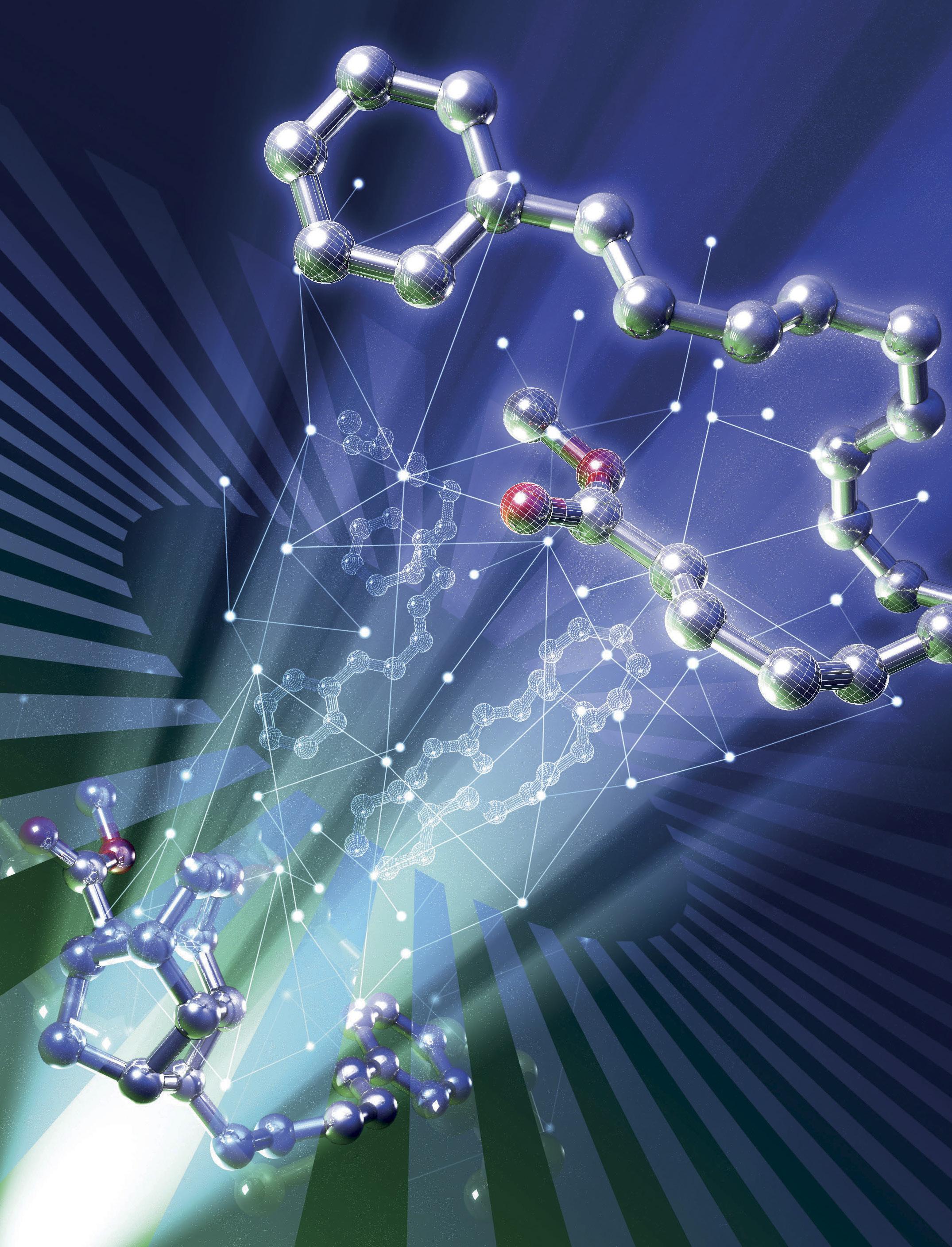
in stereo
Automated reaction path search method predicts accurate stereochemistry of pericyclic reactions using only target molecule structure.
Researchers at the Institute for Chemical Reaction Design and Discovery (WPI-ICReDD) have demonstrated the expanded use of a computational method
ORIGINAL ARTICLE
Tsuyoshi Mita, et al. Prediction of High-Yielding Single-Step or Cascade Pericyclic Reactions for the Synthesis of Complex Synthetic Targets. Journal of the American Chemical Society. November 30, 2022.
FUNDING
JST-ERATO (JPMJER1903); JSPS WPI, Grants-in-Aid for Challenging Research (Exploratory) (21K18945), Scientific Research (B) (22H02069), Transformative Research Areas (A) (22H05330), and Young Scientists (22K14673); Fugaku Trust for Medical Research; Uehara Memorial Foundation; Naito Foundation; and the US NSF (CHE-1764328).
CONTACT
Specially Appointed Associate Professor Tsuyoshi Mita Institute for Chemical Reaction Design and Discovery (WPIICReDD)
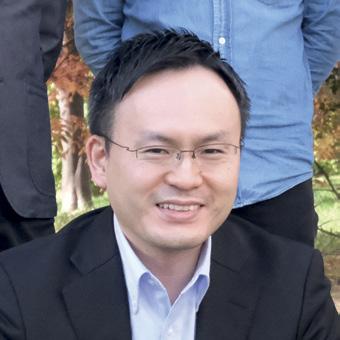
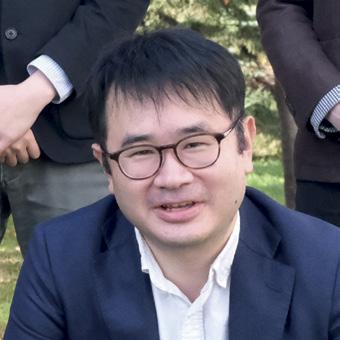
Hokkaido University tmita@icredd.hokudai.ac.jp
called the Artificial Force Induced Reaction (AFIR) method, predicting pericyclic reactions with accurate stereoselectivity based only on information about the target product molecule. The accurate prediction of a molecule’s stereochemistry— i.e., the 3D arrangement of its constituent atoms—is unprecedented for such an automated reaction path search method. This study serves as proof of concept that the AFIR method has the potential to discover novel reactions with specific stereochemistry.
In this study, AFIR is used to calculate retrosynthetic, or reverse, reactions going from product molecules to starting materials. Previously, AFIR has been used to predict small, simple reactions, but accurate stereochemistry predictions were out of reach, limiting the technique’s applicability. In this study, researchers overcome this hurdle by using the AFIR method on a major class of chemical reactions called pericyclic reactions, which are commonly found in biological processes, including the synthesis of Vitamin D.
of pericyclic reactions. The capability of this technique to predict exceptions to these standard rules demonstrates the potential for using this automated method to discover unintuitive reactions that may otherwise be overlooked.
Pericyclic reactions are also advantageous for computational work because they are concerted, which means all the bond-breaking and bond-making happens in a single step. Since such reactions do not go through ionic intermediates, it is tough for solvent molecules to alter the reaction and allows researchers to ignore solvent effects in their computations. Such computations are simpler to perform and thus enable more complex molecules to be handled. In this study, AFIR successfully handled molecules of up to 52 atoms, over 2.5 times the size of molecules in previous studies.
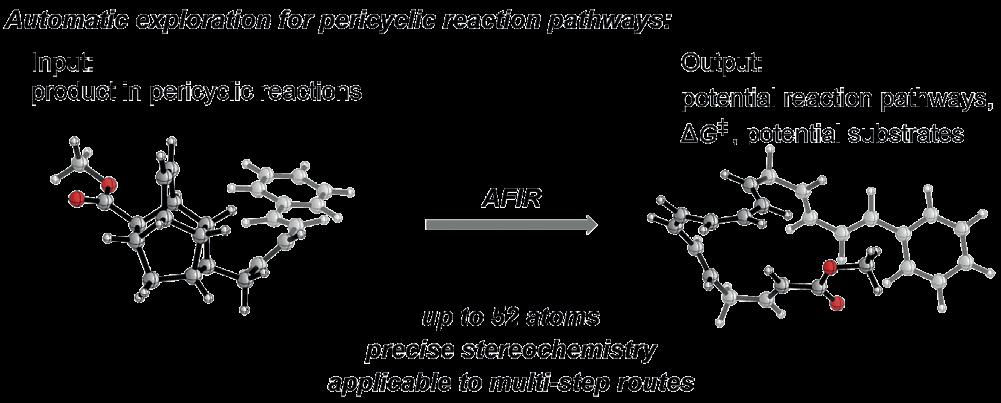
opens up new avenues for automated reaction discovery.
Lead author Tsuyoshi Mita was also struck by the significance of using an automated approach to recreate historically significant reactions.
Professor Satoshi Maeda Institute for Chemical Reaction Design and Discovery (WPIICReDD)
Hokkaido University smaeda@eis.hokudai.ac.jp
A key property of pericyclic reactions is that they have the same stereochemical relationship whether the reaction is happening in the forward or backward direction. This enabled the team to use the stereochemistry computed for the backward reaction to accurately predict the stereochemistry for the forward reaction. Notably, AFIR was also able to correctly predict stereochemistry for a reaction that breaks the Woodward-Hoffman rules, which typically govern the behavior
Importantly, the only information needed to use AFIR is the structure of the desired product molecule, so researchers can input a molecule they want to make and effectively hit the rewind button to find promising starting materials. Expanding the use of AFIR to encompass larger molecules and stereospecific processes
“The Woodward-Hoffmann Rules were established in the 1960s and I think it is very profound that 60 years later we are able to use automated reaction path searching methods to predict a reaction’s starting materials with stereochemistry that follows these rules,” said lead author Tsuyoshi Mita. “Endiandric Acid C was synthesized by Nicolau in 1982 based on Black’s biosynthetic hypothesis, and I am very pleased that in this work we were able to recreate what was in their heads using quantum chemical computations. I am both an organic synthetic chemist and a user of the AFIR method and in this project I was once again reminded of the power of the AFIR method.”
General scheme for generating retrosynthetic reaction path networks using the AFIR method (Tsuyoshi Mita et al. Journal of the American Chemical Society. November 30, 2022). Background photo (Tsuyoshi Mita et al. JACS. November 30, 2022)
14 • HOKKAIDO UNIVERSITY CHEMISTRY
“... I was once again reminded of the power of the AFIR method.”
The world in grains of interstellar dust
Understanding how dust grains form in interstellar gas could offer significant insights to astronomers and help materials scientists develop useful nanoparticles.
Laboratory and rocket-borne studies have revealed new insights into how interstellar dust grains came into being before our solar system formed. The results, published by Hokkaido University researchers and colleagues in Japan and Germany in the journal Science Advances , might also help scientists make nanoparticles with useful applications in more efficient and eco-friendly ways.


These ‘presolar’ grains can be found in meteorites that fall to Earth, allowing laboratory studies that reveal possible routes for their formation.
“Just as the shapes of
ORIGINAL ARTICLE
Yuki Kimura, et al. Nucleation experiments on a titanium–carbon system imply nonclassical formation of presolar grains. Science Advances. January 13, 2023.
FUNDING
JAXA FY2016 ISAS SmallScale Science Projects, DLR (50WM1846); and JSPS Grantin-Aids for Scientific Research (15H05731, 20H05657).
CONTACT
Associate Professor Yuki
Kimura Institute of Low Temperature Science
Hokkaido University
ykimura@lowtem.hokudai.ac.jp
snowflakes provide information on the temperature and humidity of the upper atmosphere, the characteristics of presolar grains in meteorites limits the environments in the outflow of gas from stars in which they could have formed,” explains Yuki Kimura of the Hokkaido team. Unfortunately, however, it has proved difficult to pin down the possible environments for the formation of grains consisting of a titanium carbide core and a surrounding graphitic carbon mantle.
Better understanding of the environment around stars in which the grains could have formed is crucial to learning more about the interstellar environment in general. That could, in turn, help clarify how stars evolve and how the materials around them become the building blocks for planets.
The structure of the grains appears to suggest that their titanium carbide core first formed and was then subsequently coated in a thick layer of carbon in more distant regions of gas outflow from stars that formed before the Sun.
The team explored the conditions that might recreate
the grain formation in laboratory modelling studies guided by theoretical work on grain nucleation – the formation of grains from tiny original specks. This work was augmented by experiments performed in the periods of microgravity experienced aboard sub-orbital rocket flights.
The results offered some surprises. They suggest the grains most likely formed in what the researchers call a non-classical nucleation pathway: a series of three distinct steps not predicted by conventional theories. First, carbon forms tiny, homogenous nuclei; titanium then deposits on these carbon nuclei to form carbon particles containing titanium carbide; finally, thousands of these fine particles fuse to form the grain.

“We also suggest that the characteristics of other types of presolar and solar grains
that formed at later stages in the development of the solar system might be accurately explained by considering non-classical nucleation pathways, such as those suggested by our work,” Kimura concludes.
The research could aid understanding of distant astronomical events, including giant stars, newly forming planetary systems, and the atmospheres of planets in alien solar systems around other stars. But it might also help scientists here on Earth to gain better control over the nanoparticles they are exploring for use in many fields, including solar energy, chemical catalysis, sensors and nanomedicine. The potential implications of studying the tiny grains in meteorites therefore range from the future industries of Earth to as far away as we can imagine.
HOKKAIDO UNIVERSITY • 15 SPACE
Titanium carbide grains: Transmission electron micrograph of the grains developed in the study (Photos: Yuki Kimura).
The rocket carrying the experiment module being launched to carry out microgravity experiments (Photo: Swedish Space Corporation).
PHARMACOLOGY
Developing antibiotics that target multiple-drug-resistant bacteria
Researchers have designed and synthesized analogs of a new antibiotic that is effective against multidrug-resistant bacteria, opening a new front in the fight against these infections.
Antibiotics are vital drugs in the treatment of a number of bacterial diseases. However, due to continuing overuse and misuse, the number of bacteria strains that are resistant to multiple antibiotics is increasing, affecting millions of people worldwide. The
ORIGINAL ARTICLE
Takeshi Nakaya, et al. Synthesis of macrocyclic nucleoside antibacterials and their interactions with MraY. Nature Communications December 20, 2022.
FUNDING
JSPS KAKENHI Grant-in-Aid for Scientific Research (B) (JP16H05097, JP19H03345, JP21H03622), Grant-in Aid for Scientific Research on Innovative Areas (JP18H04599, 20H04757), JSPS KAKENHI Grant-inAid for Research for Young Scientist (JP19K16648); Takeda Foundation; The Tokyo Biomedical Research Foundation; Hokkaido University; MEXT; AMED (JP18am0101093j0002, JP22ama121039, JP19ak0101118h0001, 21ak0101118h9903); JST START (ST211004JO); J-GRID; and NIH (R01GM120594).
CONTACT
Professor Satoshi Ichikawa Faculty of Pharmaceutical Sciences
Hokkaido University ichikawa@pharm.hokudai.ac.jp
development of new antibacterial compounds that target multiple drug resistant bacteria is also an active field of research so that this growing issue can be controlled.
A team led by Professor Satoshi Ichikawa at Hokkaido University has been working on the development of new antibacterials. Their most recent research, published in the journal Nature Communications , details the development of a highly effective antibacterial compound that is effective against the most common multidrug-resistant bacteria.
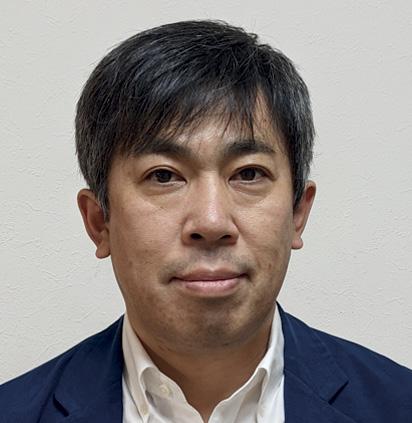
The team worked on a class of antibacterial compounds called sphaerimicins. These compounds block the function of a protein in the bacteria called MraY. MraY is essential for the replication of bacteria and plays a role in the synthesis of the bacterial cell wall; it is also not a target of currently available commercial antibiotics.
“Sphaerimicins are biological compounds, and have very complex structures,” explained Ichikawa, a corresponding author of the study. “We set out to design analogs to this molecule that would be easier to manufacture while also becoming more effective against MraY, thus increasing its antibacterial activity. The drug we designed was effective against methicillin-resistant Staphylococcus aureus (MRSA) and vancomycin-resistant Enterococcus faecium (VRE), two of the more common multi-drug resistant bacteria.”
The team analysed structures of sphaerimicin A by molecular modelling assisted by calculation, and designed and synthesized two analogs of sphaerimicin, SPM1 and SPM2. These analogs were found to be effective against Gram positive bacteria.
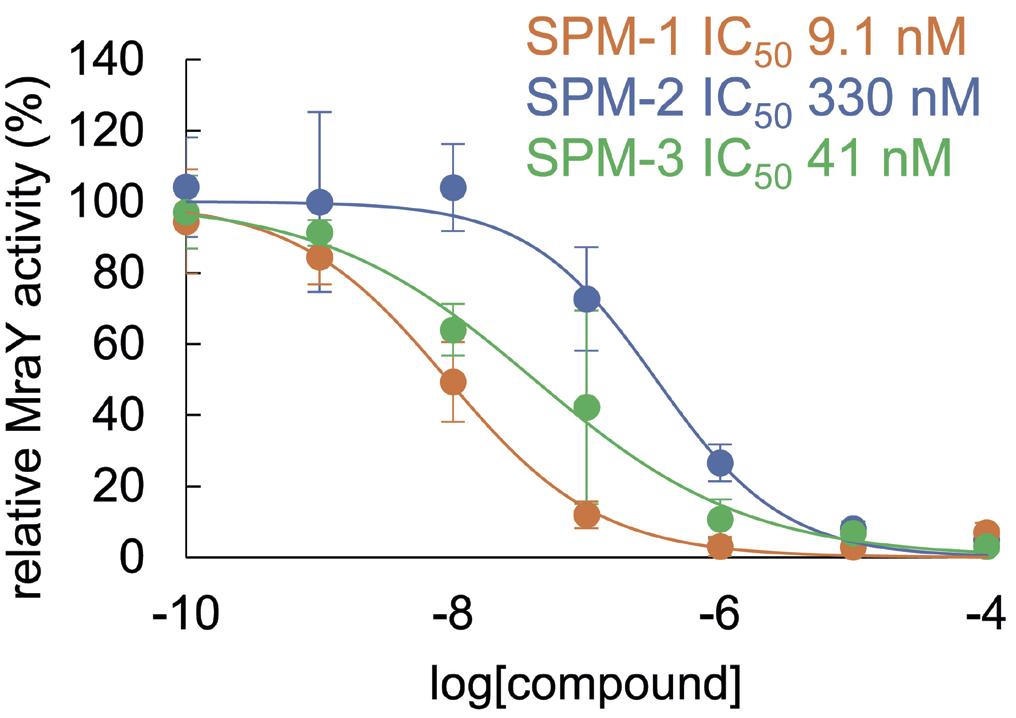
They then determined the structure of SPM1 bound to MraY. By studying this structure and comparing it to that of related antibacterial agents, they determined how to further simplify the molecules. They were successful in developing a simpler analog, SPM3, whose activity was similar to SPM1.
In addition to their effectiveness against MRSA and VRE, the SPMs were also effective against Mycobacterium tuberculosis, the bacteria that causes tuberculosis—and which has multidrug-resistant strains.
“Our most significant contribution is the construction
of the core skeleton of sphaerimicin, which can be used to develop more antibacterial agents that target MraY and hence multidrug resistant strains. Sphaerimicin is most promising as MraY is also present in Gram negative bacteria,” Ichikawa concluded. Future work will include optimisation of the currently developed SPM molecules, and the development of sphaerimicin-containing antibiotic combinations to target a wider range of bacteria.
16 • HOKKAIDO UNIVERSITY
The sphaerimicin analogs (SPMs) inhibit the activity of MraY, and hence the replication of bacteria, with different degrees of effectiveness. The potency of the analog increases as the IC50 decreases (Takeshi Nakaya, et al. Nature Communications. December 20, 2022).
“Our most significant contribution is the construction of the core skeleton of sphaerimicin.”
All roads lead to big cities
When the evolution of towns and of roads are modeled together, the natural landscape alone is enough to predict the actual arrangement of real towns.
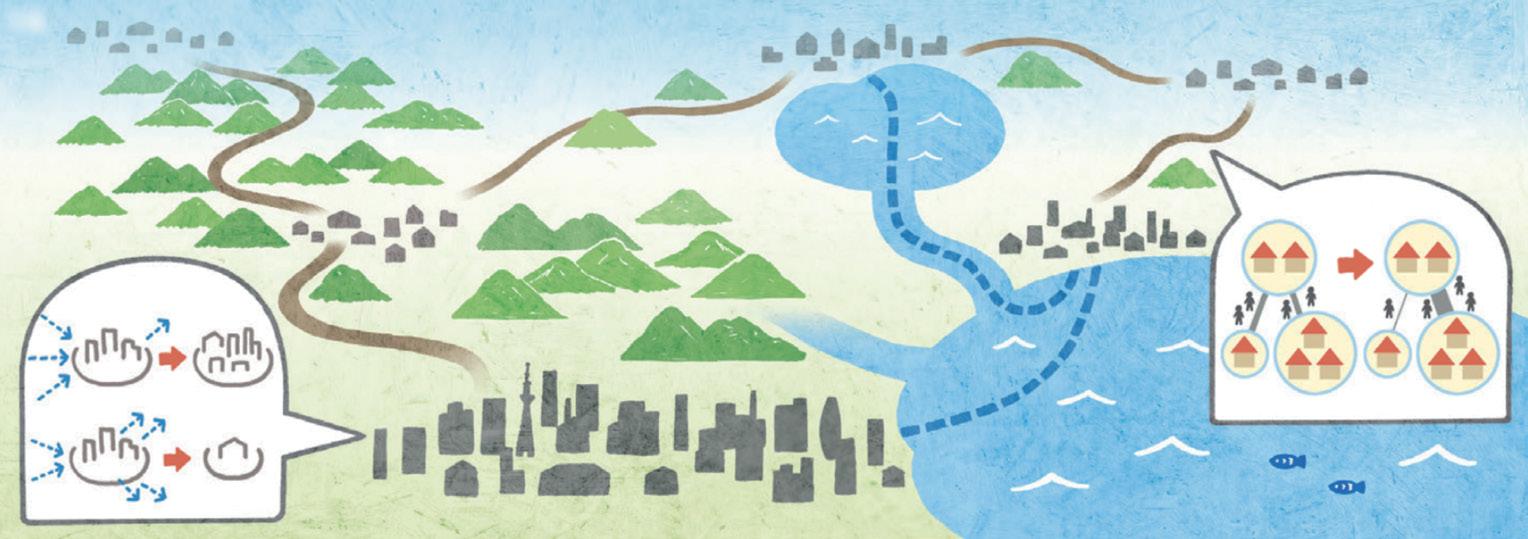
The phrase “All roads lead to Rome” captures in five words how important roads are for important cities. Yet, when we think of what made some towns last and grow and others shrink and be forgotten, we often think first of cultural and political events, the climate, land productivity and geography. As a consequence, most current scientific models of how cities develop treat roads as by-products or exogenous factors and they need a large amount of socio-economic data to be able to reproduce the cities’ arrangement.
In a paper published in Scientific Reports, Kagawa University’s Takaaki Aoki, Tohoku University’s Naoya Fujiwara, Hokkaido University’s Toshiyuki Nakagaki and University of Oxford’s Mark Fricker found that all they need to explain the distribution of towns in Italy was, first, a small set of mathematical equations that explain how the population of places and the connections between them interact; and second, a map containing the relief of the considered landscape. They emphasized: “Landscape on its own is not sufficient to explain the population distribution as a form of

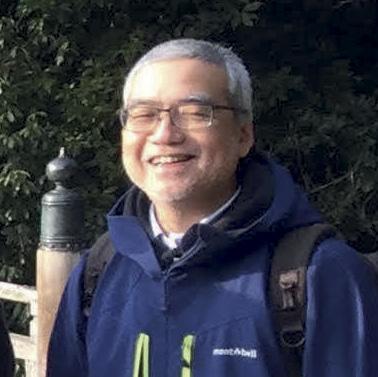
geographical determinism, but requires the inter-dependent dynamical feedback between population and the transport network emerging in parallel.”
The computational model Aoki and his colleagues constructed is based on a grid of cells that each have a terrain and slope as well as populations. In each round of the model, the computer evaluates how the road networks between each point in the map to every other point grow or shrink depending on how popular the endpoints are; and vice versa, how the populations of each cell change as a result of how well connected it is to all other cells. The landscape enters the calculation via road networks through different kinds of terrain being more or less attractive. While these conditions alone already produce results fairly similar to the real-world distribution of towns, the researchers could further increase the accuracy by including “history” into their model, by starting their simulation with the population being distributed as in ancient Roman times and by increasing the length of typical journeys as time progressed.
However, the model the researchers developed can in no case recreate the distribution of modern towns completely accurately, with some towns being larger or smaller in the model than in reality and their locations not always matching perfectly. The researchers admit that there are many important details, such as small-scale landscape features or historical events, that would significantly increase the accuracy of their model. But they maintain that it still “provides a baseline reference tool to predict the expected population distribution when constrained solely by topography.” This is all the more remarkable since in many alternative models, the relief of the natural landscape is not even explicitly considered.
The researchers argue that, using their model as a “sophisticated null model”, future work could quantify the importance of socio-economic, environmental, and other factors that are responsible for the deviations from realworld data. Thus, they hope to pioneer “a new direction to deconstruct the complex phenomena of human civilization involving many natural and social factors.”
ORIGINAL ARTICLE
Takaaki Aoki, et al. A model for simulating emergent patterns of cities and roads on realworld landscapes. Scientific Reports. June 16, 2022.
FUNDING
Research Institute for Mathematical Sciences, Kyoto University; CSIS, the University of Tokyo (No. 699); JSPS KAKENHI (21H04357, JP18K11462); HFSP (RGP0053/2012); the Leverhulme Trust (RPG-2015437); “Dynamic Alliance for Open Innovation Bridging Human, Environment and Materials” from MEXT; and JST PRESTO (JPMJPR21RA).
CONTACT
Professor Toshiyuki Nakagaki Research Institute for Electronic Science; Global Station for Soft Matter, GI-CoRE Hokkaido University nakagaki@es.hokudai.ac.jp
HOKKAIDO UNIVERSITY • 17 MATHEMATICS
The distribution of modern towns in Italy can be predicted with good accuracy by a computer model based on nothing else but the interdependence of settlement populations and road networks in the context of the natural landscape (Takaaki Aoki, et al. Scientific Reports. June 16, 2022).
Illustration of dynamical pattern formation in the model in this study where populated places and their interconnections emerge naturally across the landscape. Transport links following least-cost paths across the landscape are strengthened between locations with large populations, whilst well-connected centers in turn tend to grow to a greater extent (Takaaki Aoki, et al. Scientific Reports. June 16, 2022).
Molecular robots work cooperatively in swarms
In a global first, scientists have demonstrated that molecular robots are able to accomplish cargo delivery by employing a strategy of swarming, achieving a transport efficiency five times greater than that of single robots.
Swarm robotics is a new discipline, inspired by the cooperative behavior of living organisms, that focuses on the fabrication of robots and their utilization in swarms to accomplish complex tasks. A swarm is an orderly collective behavior of multiple individuals. Macro-scale swarm robots have been developed and employed for a variety of applications, such as transporting and accumulating cargo, forming shapes, and building complex structures.
A team of researchers, led by Dr. Mousumi Akter and Associate Professor Akira Kakugo from the Faculty of Science at Hokkaido University, has succeeded in developing the world’s first working micro-sized machines utilizing the advantages of swarming. The findings were published in the journal Science Robotics.

A swarm of cooperating robots gains a number of characteristics which are not found
in individual robots—they can divide a workload, respond to risks, and even create complex structures in response to changes in the environment. Microrobots and machines at the micro- and nano-scale have very few practical applications due to their size; if they could cooperate in swarms, their potential uses would increase massively.
The team constructed about five million single molecular machines. These machines were composed of two biological components: microtubules linked to DNA, which allowed them to swarm; and kinesin, which were actuators capable of transporting the microtubules. The DNA was combined with a light-sensitive compound called azobenzene that functioned as a sensor, allowing for control of swarming. When exposed to visible light, changes in the structure of azobenzene caused the DNA to form double strands and led
to the microtubules forming swarms. Exposure to UV light reversed this process.

The cargo used in the experiments consisted of polystyrene beads of diameters ranging from micrometers to tens of micrometers. These beads were treated with azobenzene-linked DNA; thus, the cargo was loaded when exposed to visible light and unloaded when exposed to UV light. However, the DNA and azobenzene used in the molecular machines and the cargo were different, so swarming could be controlled independently of cargo-loading.
Single machines are able to load and transport polystyrene beads up to 3 micrometers in diameter, whereas swarms of machines could transport cargo as large as 30 micrometers in diameter. Furthermore, a comparison of transport distance and transport volume showed that the swarms were up to five times more efficient
at transport compared to the single machines.
By demonstrating that molecular machines can be designed to swarm and cooperate to transport cargo with high efficiency, this study has laid the groundwork for the application of microrobots to various fields. “In the near future, we expect to see microrobot swarms used in drug delivery, contaminant collection, molecular power generation devices, and micro-detection devices,” says Akira Kakugo.
ORIGINAL ARTICLE
Mousumi Akter, et al. Cooperative cargo transportation by a swarm of molecular machines. Science Robotics. April 20, 2022.
FUNDING
The Future AI and Robot Technology Research and Development Project from NEDO; MEXT Grant-in-Aid for Scientific Research on Innovative Areas (18H05423) and Grant-in-Aid for Scientific Research (A) (18H03673, 21H04434).
CONTACTS
Professor Akira Kakugo Graduate School of Science
Kyoto University
kakugo.akira.8n@kyoto-u.ac.jp formerly, Associate Professor
Faculty of Science
Hokkaido University
18 • HOKKAIDO UNIVERSITY LIFE SCIENCES
Key Findings: Illustrations of cargo transport by a swarm of molecular robots (top) and fluorescence images of a molecular robot transporting blue sphere-like cargo (bottom). The scale bar is 20 micrometers. By specifying the position of the light irradiation, it is possible to accumulate the cargo at the designated destination (right). The scale bar is 50 micrometers (Mousumi Akter, et al. Science Robotics. April 20, 2022).
New COVID-19 DRUG
OnNovember 22, 2022, the Ministry of Health, Labour and Welfare (MHLW) of Japan approved Shionogi’s Xocova® Tablets 125 mg (Generic name: ensitrelvir fumaric acid, Code No.: S-217622) for the treatment of COVID-19. This is the first manufacturing and marketing approval under the emergency regulatory approval system and the first domestically produced oral agent against the virus. Xocova suppresses the replication of SARS-CoV-2 by selectively inhibiting the viral 3CL protease, which is essential to viral replication.
Akihiko Sato, a Visiting Professor from Shionogi who leads the division, said, “First of all, I hope that Xocova will help patients’ quick recovery from COVID-19.” He also mentioned, “Shionogi was able to develop the new drug in a short period of two years by investing vast human resources into the project. Hokkaido University’s research capabilities also played an essential role in the development of this drug.”
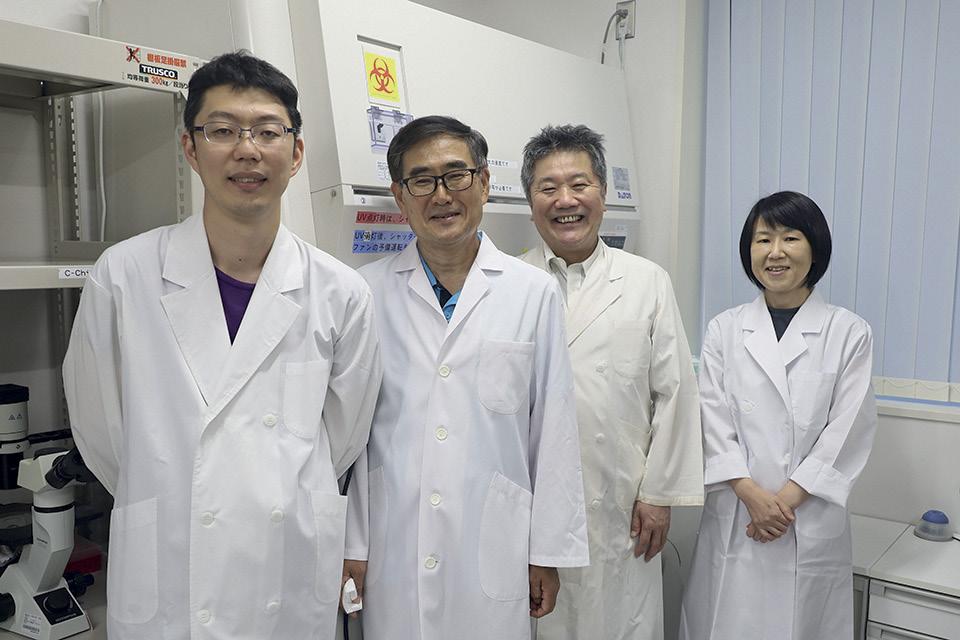
The development of Xocova was conducted jointly by Shionogi and the International Institute for Zoonosis Control (IIZC) at Hokkaido University.
Professor Hirofumi Sawa (Division of Molecular Pathobiology of IIZC and Hokkaido University, Institute for Vaccine Research and Development: HU-IVReD) commented, “The members of Division of Anti-Virus Drug Research, Shonogi & Co., Ltd have been working very hard to conduct plenty of experiments day and night at our Bio-Safety Level (BSL-3) facilities which led to the discovery of the seed compounds. As a researcher in academia, I am very happy to have experienced the entire process of development of antiCOVID-19 drug with the members of Shionogi & Co., Ltd. I’m extremely pleased that Xocova has been approved as a treatment option for patients.”
By combining AI technology and wet lab experiments, Shionogi first identified multiple compounds that were the drug candidates. Then, Hokkaido University’s IIZC assessed their antiviral activities, using the cellular system and model animals that IIZC developed soon after the onset of the pandemic. Based on the results, Shionogi developed Xocova by finetuning the chemical structure of the most promising compound. Akihiko Sato declared, “The development of Xocova wasn’t possible without the collaboration with Hokkaido University. We would like to continue this joint research to develop drugs for other emerging infectious diseases to answer the unmet needs.”
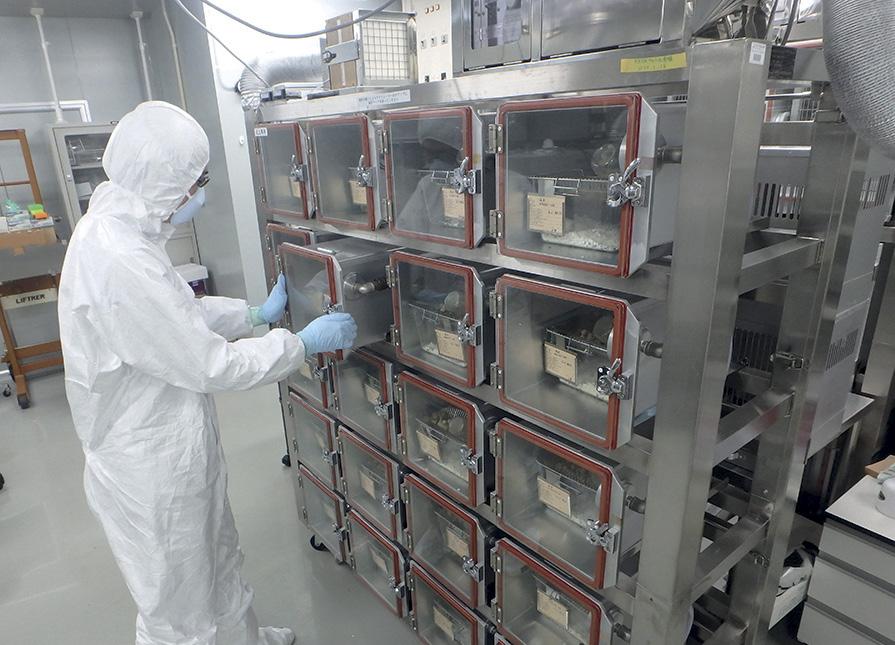
CONTACT
Professor Hirofumi Sawa
International Institute for Zoonosis Control Hokkaido University
h-sawa@czc.hokudai.ac.jp
University approved in Japan
HOKKAIDO UNIVERSITY • 19
developed by Shionogi & Co., Ltd. and Hokkaido
Hokkaido University students presented
CLIMATE RESEARCH AT COP 27
Five students from the Environmental Biogeochemistry Lab, Graduate School of Global Food Resources, Hokkaido University, presented their research project at 2022 United Nations Climate Change Conference (COP 27) in Egypt.
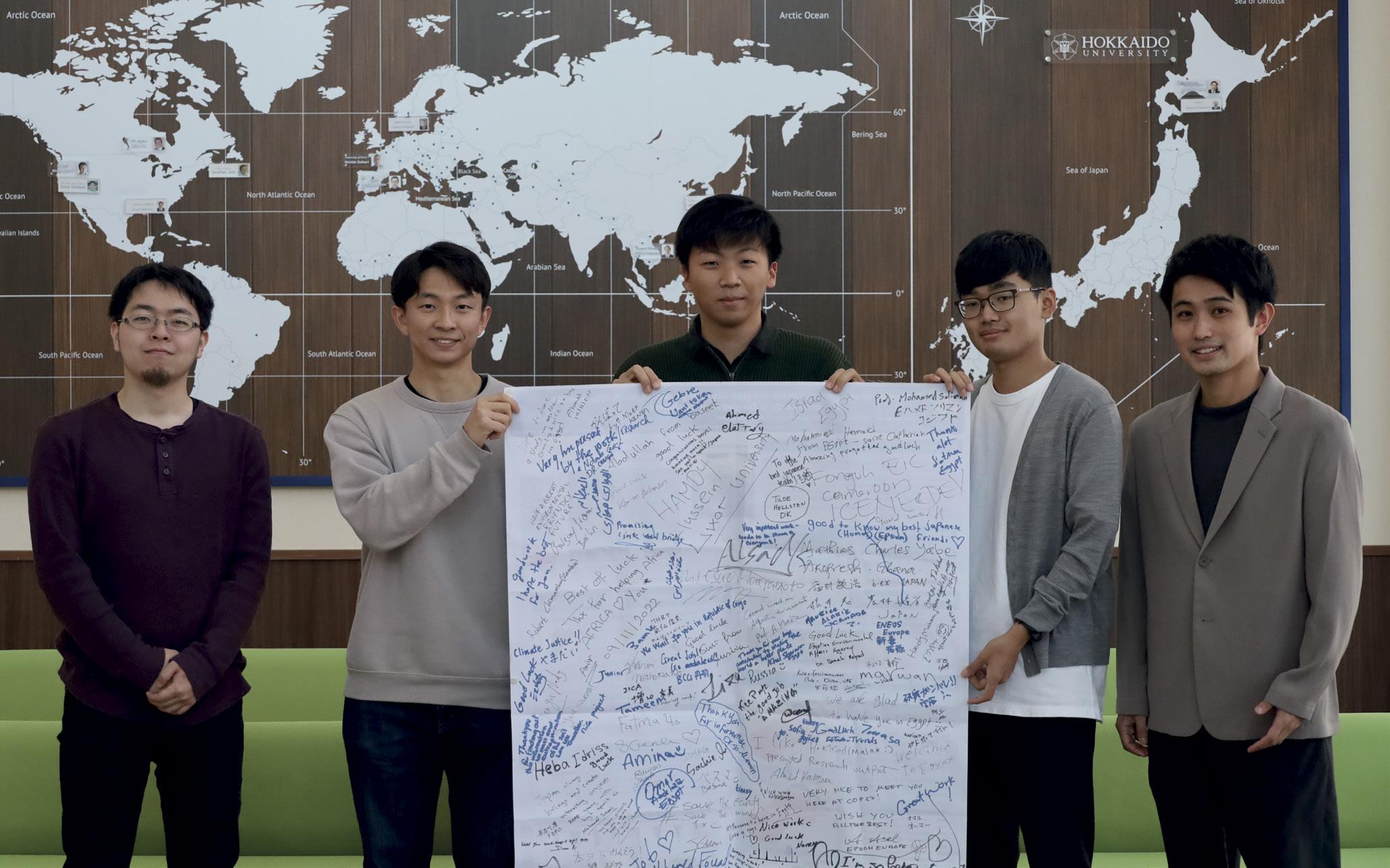
Water, Energy, Livelihoods and eCOsysteM hEalth (WELCOME) Project is an international and multidisciplinary research project focusing on the improvement of one of the world’s largest artificial lakes, Lake Kariba in Zambia. For its rich natural resource and scenic beauty, Lake Kariba has a pivotal role in the livelihood of the local people; from providing food and irrigation supply to advancing the local tourism.“It is said that environmental problems occurring in Africa will greatly impact the entire world. So, the issue of coping and adapting to the climate change is a challenge for all of us, regardless of where we live,” Nishimine said describing part of the research backgrounds.
Supported by the local stakeholders, the researchers are assessing the sustainability of Lake Kariba catchment through four main research focus: changes in land use and water quality, ecosystem health, water balance and nutrient cycle, and sustainability and
20 • HOKKAIDO UNIVERSITY
Left to right: Akira Nagata (D1), Yu Hirata (M1), Gen Takahashi (M2), Hiroki Nishimine (M1), and Terumasa Yamamoto (M1). The poster they are holding up is filled with handwritten messages from people who visited their COP 27 booth (Photo by Miho Nagao).
vulnerability. The first two topics already resulted in research reports which were presented in COP 27. The international conference took place in Sharm El Sheikh, Egypt, and was running from November 6th to 18th, 2022.
Through crowdfunding and other supports, the five students representing the project were able to take part in the conference where they set up a booth exhibiting the recent research findings. Fellow researchers, government officials, local students, NGO representatives, hundreds of people coming from different countries and institutes dropped by their booth. All share similar concerns and interests in respect of the research topic.
“I think people are interested in this topic especially because the sub-Saharan Africa is an area vulnerable to the effects of the climate change owing to its high population growth,” said Takahashi. “Although the ongoing project officially ends in 2023, through this kind of networking we see some potentials for new projects in future. We met so many people that we amassed around 200 business cards,” added Takahashi with a laugh. All students agreed that partaking in COP 27 has given an immense amount of experience and new perspectives.
“I had always assumed that research is strictly in academic sense, not having any clear image on the application. Only after having met many business and industry-related people in COP 27 I realize that business opportunities can also bloom from research activities,” said Hirata.

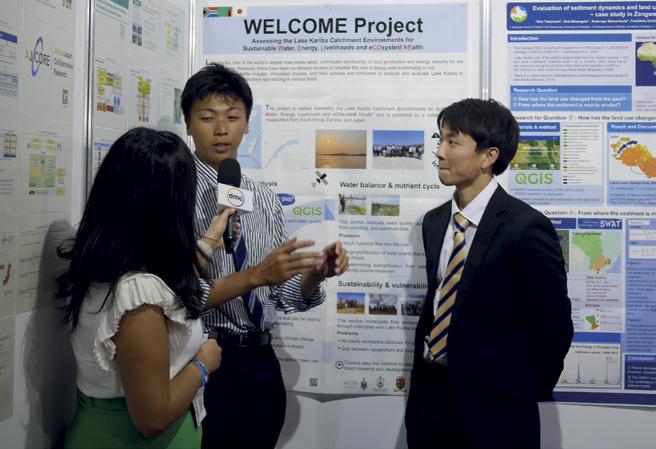

Led by Associate Professor Yoshitaka Uchida of Environmental Biogeochemistry Lab (Graduate School of Global Food Resources), the 3-year research project started in 2021 in collaboration with scientists from Zambia and South Africa. The researchers also presented the results in front of the local communities and stakeholders to receive their opinions and created workshops based on the results. Uchida is concerned by the fact that, despite facing severe
climate-related consequences (e.g., the depletion of water), people in the sub-Saharan Africa do not have a lot of resource to tackle those issues. So, he was pleased with the student’s participation and efforts in the project. “It is good to see that my students started being aware of these reality through attending COP 27 and by conducting field studies in Zambia with me. I really hope that these future generation can work together with international minds to solve the issue of climate change,” said Uchida.
CONTACT
HOKKAIDO UNIVERSITY • 21
Associate Professor Yoshitaka Uchida Graduate School of Global Food Resources Hokkaido University uchiday@chem.agr.hokudai.ac.jp
Gen Takahashi (striped shirt, left photo) and Yu Hirata (suit, right photo) using posters to explain their research project to booth visitors (Photo by Terumasa Yamamoto).
The students had the chance introducing their findings in front of the local TV stations’ and media partners’ cameras (Photos by Terumasa Yamamoto)
Professor Norihiro Naganawa, Slavic-Eurasian Research Center (SRC), has received two prestigious academic awards in Japan: the 18th Japan Society for the Promotion of Science (JSPS) Prize and the 18th Japan Academy Medal. The awards recognize his pioneering research, entitled “Explorations in Entanglements of Russia’s Empire and the Muslim World,” which is based on his profound local knowledge of the intersection of Russia and the Muslim community in the Volga-Ural region from the turn of the 19th to the 20th centuries.



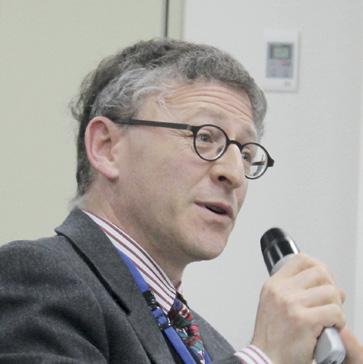


Specially Appointed Associate Professor Landon Kamps of the Graduate School of Engineering was selected as one of MIT Technology Review’s “Innovators Under 35 Japan 2021.” Kamps, who was awarded in the Transportation (Space Development) category, has been researching and developing a “kick motor,” or an orbit-transfer rocket, to enable safe and low-cost transportation between space hubs and final destinations.

Professor David Wolff of the Slavic-Eurasian Research Center (SRC) has been named a Humboldt Research Award Recipient for 2023. The award, administered by the Alexander von Humboldt Foundation to “researchers whose fundamental discoveries, new theories or findings have had a lasting effect on their discipline beyond their immediate research area and who are expected, moreover, to continue producing outstanding research in the future,” recognizes Wolff’s thirty years of research and publications that shed light on Russia’s activities in Asia during a long 20th century.
Distinguished Professor Yasuhiko Suzuki received an Honorary Doctorate in Public Health Microbiology from Mahidol University, conferred by Her Royal Highness Princess Maha Chakri Sirindhorn of Thailand. Professor Suzuki was awarded the honorary doctorate in recognition of his contribution to public health microbiology in Thailand over more than two decades.
AWARDS & RECOGNITIONS received by Researchers at Hokkaido University

Distinguished Professor Hiroki Shirato of Hokkaido University is one of the nine recipients of the Japan Academy Prize in 2022, for his groundbreaking work on “Biomedical and Engineering Research about Real-time Tumor Tracking Radiotherapy/Particle Beam Therapy against Cancer.” The award recognizes his immense, ground-breaking contributions in the creation of the realtime image gated proton therapy (RGPT) system, one of the most advanced radiation therapy systems in the world.
Associate Professor Masato Hiwatari of the Faculty of Economics and Business was one of seven recipients in Japan of the Medal for the 30th Anniversary of Independence of the Republic of Uzbekistan . The award was conferred to Hiwatari in recognition of his research activities on regional society, economy and development in Uzbekistan.
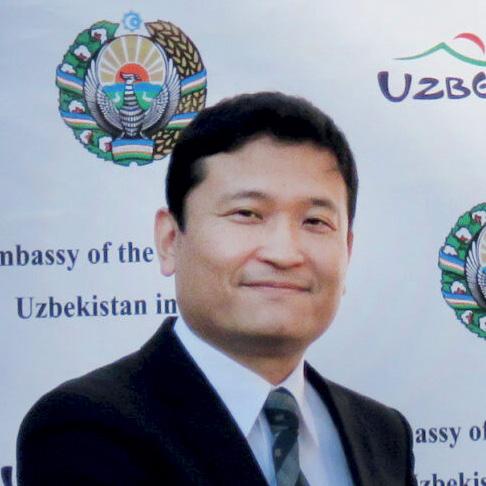
Associate Professor Masaaki Kitajima of the Faculty of Engineering has been recognised as a Highly Cited Researcher 2022 by Clarivate. The Highly Cited Researchers list is based on analysis on authorship and paper citation records in the Web of Science database, run by Clarivate. Kitajima was recognised for the impact of his work in the field of Environment and Ecology, one of the 21 fields considered in the analysis.
Professor Takanori Teshima of the Faculty of Medicine is one of five individual recipients of the 74th Health Culture Award (hoken bunka shō). The Award recognizes organizations and individuals working on issues in the field of public health and hygiene. Professor Teshima received the award for his efforts in developing a widely-used saliva test for the detection of SARS-CoV-2.
Landon Ka m p s 22 • HOKKAIDO UNIVERSITY
Masato Hiw a t a ir Yasuhiko S u z u ik Takanori Te s h i m a Norihiro N a g a n awa DavidWolf Masaaki Kit a j i m a HirokiShir a t o
AWARDS
Adobe stock ©Green Wind
Efficient mRNA delivery by branched lipids
A novel branched lipid that has a high stability in storage and a high efficiency in the delivery of mRNA to cells has been developed.
Messenger RNA (mRNA) are biological molecules that transfer the information coded by genes in the nucleus to the cytoplasm for protein synthesis by ribosomes. mRNA sequences can be designed to encode specific proteins when delivered to cells; the most well-known example of this are the mRNA vaccines for COVID-19. One of the most advanced technologies for the delivery of mRNA are lipid nanoparticles (LNPs), which are composed of ionizable lipids, cholesterol, helper lipids and polyethylene glycol.
A team of researchers led by Assistant Professor Yusuke Sato and Professor Hideyoshi Harashima at the Faculty of Pharmaceutical Sciences, Hokkaido University, and by Kazuki Hashiba at the Nitto Denko Corporation have developed a novel branched ionizable lipid which, when included in LNPs, greatly increases the efficiency of mRNA delivery. Their results were published in the journal Small Science
Two major issues have prevented a systematic analysis of the effect of branching
ionizable lipids. First, tail branching leads to an enormous diversity of chemicals; second, the number of commercially available branching ionizable lipids is limited. To overcome these hurdles, the researchers generated a systematic lipid library of branching ionizable lipids, limiting it to a specific subset of branching lipids which could be described with just two parameters: total carbon number and symmetry. They then tested the 32 lipids in this library for their effect on the stability of LNPs containing mRNA (LNP-RNA).

The team discovered that LNP-RNAs which contained highly symmetric branched lipids exhibited greater microviscosity, and the higher microviscosity was positively correlated with increased stability of LNP-RNAs in storage. Highly symmetric branched lipids in LNP-RNAs are also positively correlated with protein expression in the liver and spleen in mice. They determined that the length of the branched chain affects organ selectivity.

A cross-section of an LNP-RNA. The mRNA (red) is encapsulated by lipids (blue spheres with tails; Image: Yusuke Sato.
The most stable storage and most efficient delivery of the mRNA was achieved by the branching lipid CL4F 8-6. The authors demonstrated that this particular lipid could be used in LNPs designed for gene editing, achieving a 77% suppression of the target gene in mice with just one dose of LNPs.
This study revealed that branched lipids with a high level of symmetry contributed to optimal LNP properties for efficient intracellular delivery and stable formulations. Future work will focus on developing expanded lipid libraries to understand the properties of other branched lipids, and may lead to design of novel lipids.
The structure of CL4F 8-6, the branched ionizable lipid that was most effective in increasing storage stability and LNPRNA delivery (Image: Yusuke Sato).
ORIGINAL ARTICLE
Kazuki Hashiba, Yusuke Sato, et al. Branching Ionizable Lipids Can Enhance the Stability, Fusogenicity, and Functional Delivery of mRNA. Small Science. November 9, 2022.
FUNDING
Nitto Denko Corporation and Research Expenses from the MEXT.
CONTACT
Assistant Professor Yusuke Sato

Faculty of Pharmaceutical Sciences
Hokkaido University y_sato@pharm.hokudai.ac.jp
Expression of EGFP (green) in the liver 24 hours after administering LNP-RNA containing EGFP mRNA. CL4F 8-6 was used to synthesize the LNP-RNA. Left, control; center, 0.5 mg/kg EGFP mRNA; right, 1.5 mg/kg EGFP mRNA. Blood vessels are in red. (Kazuki Hashiba, Yusuke Sato, et al. Small Science. November 9, 2022).

Professor Hideyoshi Harashima

Faculty of Pharmaceutical Sciences
Hokkaido University harasima@pharm.hokudai. ac.jp
HOKKAIDO UNIVERSITY • 23 PHARMACOLOGY
A warmer Arctic Ocean leads to more snowfall further south
A new model explains that water evaporating from the Arctic Ocean due to a warming climate is transported south and can lead to increased snowfall in northern Eurasia in late autumn and early winter. This information will allow for more accurate predictions of severe weather events.
Rising air temperatures due to global warming melt glaciers and polar ice caps. Seemingly paradoxically, snow cover in some areas in northern Eurasia has increased over the past decades. However, snow is a form of water; global warming increases the quantity of moisture in the atmosphere, and thus the quantity and likelihood of rain and snow. Understanding where exactly the moisture comes from, how it is produced and how it is transported south is relevant for better predictions of extreme weather and the evolution of the climate.
ORIGINAL ARTICLE
Tomonori Sato, et al. Enhanced Arctic moisture transport toward Siberia in autumn revealed by tagged moisture transport model experiment. npj Climate and Atmospheric Science November 24, 2022.

FUNDING
JSPS KAKENHI (JP19H05668), the ArCSII project (JPMXD1420318865), JST SICORP (JPMJSC1902).
CONTACT
Associate Professor Tomonori
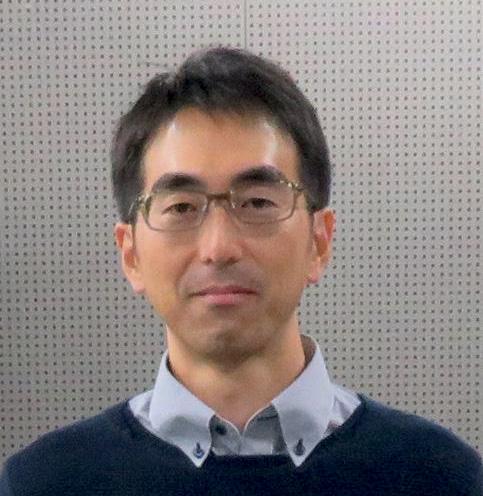
Sato
Faculty of Environmental Earth Science
Hokkaido University
t_sato@ees.hokudai.ac.jp
Hokkaido University environmental scientist Tomonori Sato and his team developed a new tagged moisture transport model that relies on the “Japanese 55-year reanalysis dataset”, a painstaking reanalysis of world-wide historical weather data over the span of the past 55 years. The group used this material to keep their model calibrated over much longer distances than hitherto possible and were thus able to shed light onto the mechanism of the moisture transport in particular over the vast landmasses of Siberia.
A standard technique to analyse moisture transport is the “tagged moisture transport model”. This is a computer modelling technique that tracks where hypothetical chunks of atmospheric moisture form, how they are moved around, and where they precipitate due to the local climatic conditions. But the computer models become more and more inaccurate as the distance to the ocean increases. In particular, this makes quantitative predictions difficult. Thus, these methods have not been able to satisfyingly explain the snowfall in northern Eurasia.
The results of the study, published in the journal npj Climate and Atmospheric Science show that water evaporation from the Arctic Ocean has increased over the past four decades, and that the biggest changes have occurred from the Barents and Kara Seas north of western Siberia,
as well as over the Chukchi and East Siberian Seas north of eastern Siberia, between October and December. At this time of year, the Arctic Ocean is still warm and the area not covered by ice is still large. Importantly, this development coincides with the area where sea ice retreat has been strongest over the time frame of the study. In addition, the quantitative model shows that evaporation and snowfall are especially strong during certain weather events such as cyclonic systems taking up unusually large quantities of moisture and transporting them south into Siberia, thus also highlighting detailed and specific mechanistic insights into the weather dynamics of the region.
With the Arctic Ocean being twice as sensitive to rapid warming than the global average, evaporation and subsequent changes to the hydrological cycle over northern Eurasia will become even more pronounced in the years to come. The researchers say that, since snowfall often delays
the downstream effects of the abnormal weather events that cause it, “knowledge of the precursor signal stored as a snow cover anomaly is expected to help improve seasonal predictions of abnormal weather, e.g., the potential for heatwaves that enhance the risk of fire in boreal forests.” This study therefore yields a key element to understanding the mechanism of this weather system as well as others that are influenced by it, and thus to making better predictions of severe events that could do harm to people and infrastructure.
24 • HOKKAIDO UNIVERSITY CLIMATE CHANGE
An increasingly warm and ice-free Arctic Ocean has, in recent decades, led to more moisture in higher latitudes. This moisture is transported south by cyclonic weather systems where it precipitates as snow, influencing the global hydrological cycle and many terrestrial systems that depend on it (Illustration: Tomonori Sato).
“Knowledge of the precursor signal stored as a snow cover anomaly is expected to help improve seasonal predictions of abnormal weather.”
DR. BENJAMIN LIST
BESTOWED WITH THE SPECIAL TITLE “HOKKAIDO UNIVERSITY PROFESSOR”

On September 21st, 2022, Hokkaido University held a celebration to honor Dr. Benjamin List, who won the Nobel Prize in Chemistry 2021, and awarded him the title of Hokkaido University Professor. Dr. Benjamin List was appointed Principal Investigator of the Institute for the Chemical Reaction Design and Discovery (WPI-ICReDD) at Hokkaido University in 2018, and has been a Specially Appointed Professor since 2020. He shared the 2021 Nobel Prize in Chemistry with Dr. David W.C. MacMillan (Princeton University, USA) for “the development of asymmetric organocatalysis.”
The title of Hokkaido University Professor is given by the President to researchers who have made outstanding educational and research achievements worldwide and are recognized as making long-term contributions to the advancement of education and research at Hokkaido University. Dr. List is the third recipient of the

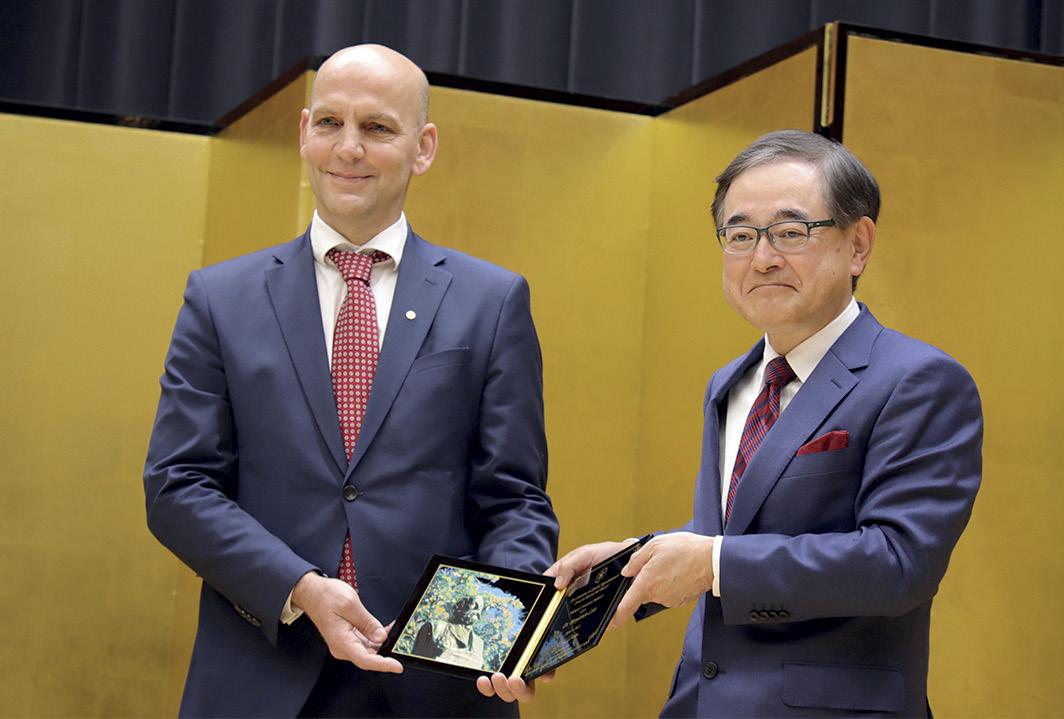
title following Dr. Akira Suzuki who won the 2010 Nobel Prize in Chemistry, and Dr. Hiroshi Kida, the Head of the International Institute for Zoonosis Control. At the ceremony, Hokkaido University President Kiyohiro Houkin, Federal Republic of Germany Ambassador Extraordinary and Plenipotentiary His Excellency Dr. Clemens von Goetze, and Hokkaido Governor Naomichi Suzuki delivered remarks, congratulating Dr. List on his Nobel Prize, and addressing the importance of strengthening ties with Dr. List and the German scientific community.
feature Understanding the Impact of Climate Change
Aspecial feature “Understanding the Impact of Climate Change” has been launched on December 1, 2022.
Researchers at Hokkaido University conduct research on climate change from diverse viewpoints including forests, glaciers and ice sheets, the atmosphere, oceans, and society. This special feature introduces their continuing efforts to examine and
clarify the mechanisms, impacts, and adaptation measures of climate change through videos and articles. The feature is being regularly updated.

The feature can be accessed here https:// www.global.hokudai.ac.jp/ climate-change/

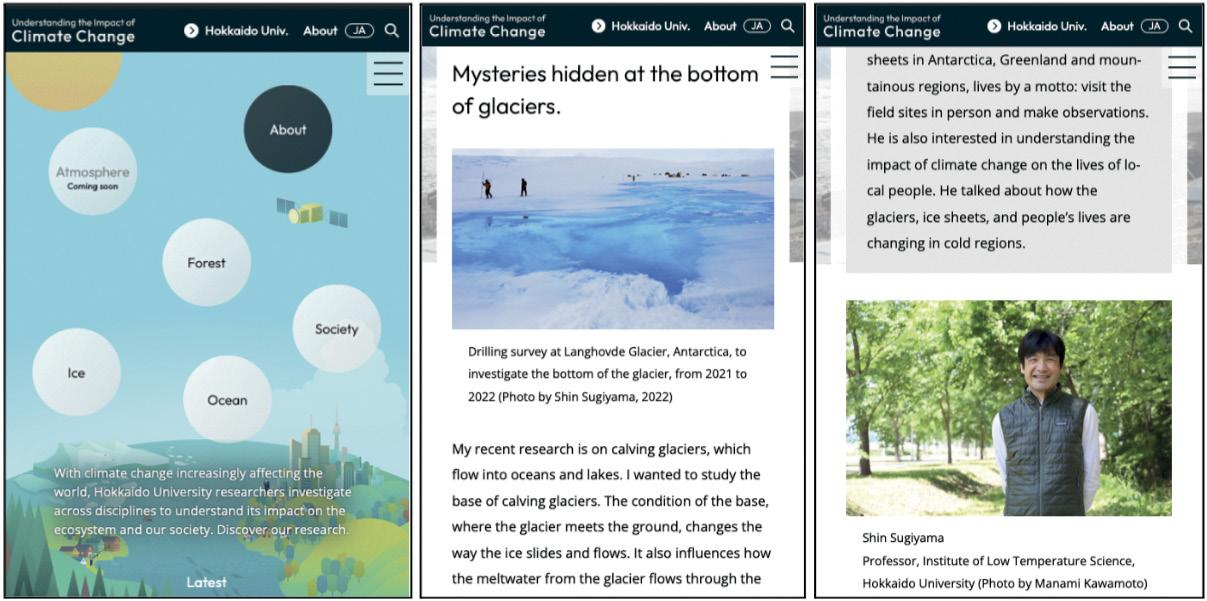
HOKKAIDO UNIVERSITY • 25
Dr. Benjamin List receiving the title Hokkaido University Professor from President Kiyohiro Houkin (Photo by Miho Nagao)
Ambassador Extraordinary and Plenipotentiary Dr. Clemens von Goetze (left) from German Embassy delivering a congratulatory message, and Hokkaido Governor Naomichi Suzuki (right) delivering a video message (Photo by Yu Kikuchi)
stable,
Waste heat is a very promising source of energy conservation and reuse, by means of converting this heat into electricity—a process called thermoelectric conversion. Commercially available thermoelectric conversion devices are synthesized using rare metals. While these are quite efficient, they are expensive and, in the majority of cases, utilize toxic materials. Both these factors have led to these converters being of limited use. One of the alternatives are oxide-based thermoelectric materials, but the primary drawback these suffer from is a lack of evidence of their stability at high temperatures.
A team led by Professor Hiromichi Ohta at the
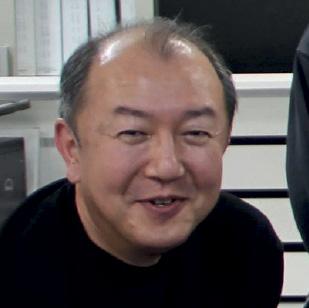
Research Institute for Electronic Science at Hokkaido University has synthesised a barium cobalt oxide thermoelectric converter that is reproducibly stable and efficient at temperatures as high as 600°C. Their findings were published in the journal ACS Applied Materials & Interfaces
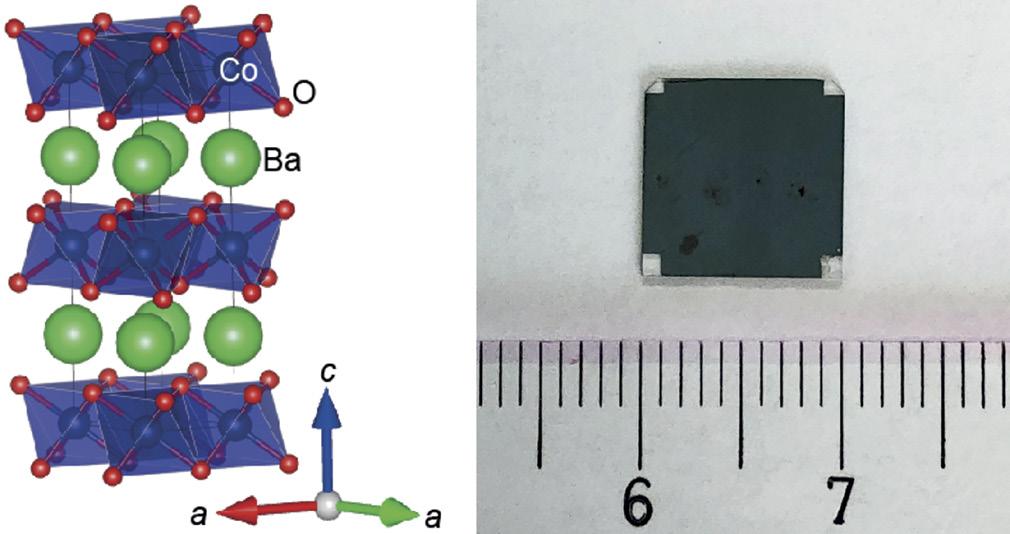
Thermoelectric conversion is driven by the Seebeck effect: when there is a temperature difference across a conducting material, an electric current is generated. However, efficiency of thermoelectric conversion is dependent on a figure called the thermoelectric figure of merit ZT. Historically, oxidebased converters had a low ZT , but recent research has revealed many candidates that

have high ZT, but their stability at high temperatures was not well documented.
Hiromichi Ohta’s group has been working on layered cobalt oxide films for over two decades. In this study, the team sought to examine the thermal and chemical stability of these films, as well as measure their ZT values, at high temperatures. They tested cobalt oxide films layered with sodium, calcium, strontium or barium, analysing their structure, resistivity, and thermal conductivity.
They found that, of the four variants, the barium cobalt oxide layered film retained its stability in terms of structural integrity and electrical resistivity at temperatures as high as 600°C. In comparison, the sodium- and calcium cobalt oxide films were only stable
until 350°C, and the strontium cobalt oxide film was stable up to 450°C. The ZT of the barium cobalt oxide film increased with the temperature, reaching ~0.55 at 600°C, comparable to some commercially available thermoelectric converters.
“Our study has shown that barium cobalt oxide films would be excellent candidates for high-temperature thermoelectric conversion devices,” said Hiromichi Ohta. “ In addition, they are environment friendly, giving potential for wide deployment.”
ORIGINAL ARTICLE
Xi Zhang, Yuqiao Zhang, et al. Ba1/3CoO2: A Thermoelectric Oxide Showing a Reliable ZT of ~0.55 at 600 °C in Air. ACS Applied Materials & Interfaces July 12, 2022.
FUNDING
JSPS Grants-in-Aid for Innovative Areas (19H05788) and Grant-in-Aid for Scientific Research A (22H00253).
CONTACT
Professor Hiromichi Ohta Research Institute for Electronic Science Hokkaido University hiromichi.ohta@es.hokudai. ac.jp
26 • HOKKAIDO UNIVERSITY ELECTRONICS
(Left) ZT of all four cobalt oxide films increases with increasing temperature. The barium cobalt oxide film (red diamonds) has the highest ZT among the four, reaching a high ZT value of ~0.55 at 600 °C. (Right) The ZT of the barium cobalt oxide film at 600 °C is comparable to that of commercially available thermoelectric converters (lead-tellurium, PbTe, and silicon germanium, SiGe; Xi Zhang, Yuqiao Zhang, et al. ACS Applied Materials & Interfaces. July 12, 2022).
The crystal structure of the barium cobalt oxide film (left; Xi Zhang, Yuqiao Zhang, et al. ACS Applied Materials & Interfaces. July 12, 2022), and the metal oxide film itself (right; Photo: Hiromichi Ohta).
Efficient,
and eco-friendly thermoelectric material discovered
A thermoelectric metal oxide film with a thermoelectric figure of merit of ~0.55 at 600°C has been discovered, opening new avenues towards the widespread use of thermoelectric converters.
Fields of Knowledge video showcase
Hokkaido University’s research and educational facilities are located in Sapporo and Hakodate Campuses, throughout various parts of Hokkaido, and in Wakayama Prefecture. The total area of research allotments (forests, farms, marine research centers, etc.) is approximately 70,000 ha, making it one of the world’s largest facilities owned by a university.
The Field Science Center for Northern Biosphere (FSC), Hokkaido University, was established in 2001 as one of the research facilities of Hokkaido University. The center conducts comprehensive research primarily on the northern biosphere focusing on the conservation processes and mechanisms that impact biological diversity and ecosystem processes, the sustainable use of these components, the long-term
monitoring of the field science center’s ecosystems, and any relationships among these elements.
The Fields of Knowledge series focuses on the vast research and education fields of the Field Science Center for Northern Biosphere and the knowledge nurtured there through advanced approaches.


The video showcase is available as a playlist on YouTube, and new content is being added.
Fields of Knowledge (YouTube playlist)

2022 Akira Suzuki Awards in Chemical Reaction Design and Discovery
The 2nd Annual Akira Suzuki Awards Ceremony took place on January 10th, 2023. The Awards were established in 2021 by the Akira Suzuki Award Organization Committee in commemoration of Professor Akira Suzuki being awarded the 2010 Nobel Prize in Chemistry, and to celebrate his 90th birthday. The Awards are funded by the generous sponsorship of the Tosoh Corporation.
The two awards, the Akira Suzuki Award and the ICReDD Award, are bestowed upon a researcher who has achieved remarkable results in the development of chemical reactions in the field of experimental chemistry (Akira Suzuki Award) or the fields of computational (theoretical) chemistry and information science (ICReDD Award). Each award is given to one person each year, regardless of age or nationality.
The winner of the 2022 Akira Suzuki Award is John F. Hartwig , the Henry Rapoport Professor of Chemistry at the University of California, Berkeley. His research focuses on discovering and understanding new reactions for organic synthesis catalyzed by transition metal complexes. He is well known for contributions to widely practiced cross-coupling chemistry that forms arylamines, aryl ethers, aryl sulfides, and α-aryl carbonyl compounds and for discovering practical C-H bond functionalization reactions.

The winner of the 2022 ICReDD Award is Kendall N. Houk, a Distinguished Research Professor in Organic Chemistry at the University of California, Los Angeles. He is an authority on theoretical and computational organic chemistry. His group is involved in the development of rules to understand reactivity, computer modeling of complex organic reactions, and experimental tests of the predictions of theory. He collaborates prodigiously with chemists all over the world.

HOKKAIDO UNIVERSITY
27
•
John F. Hartwig
Kendall N. Houk
Hokkaido University at a glance
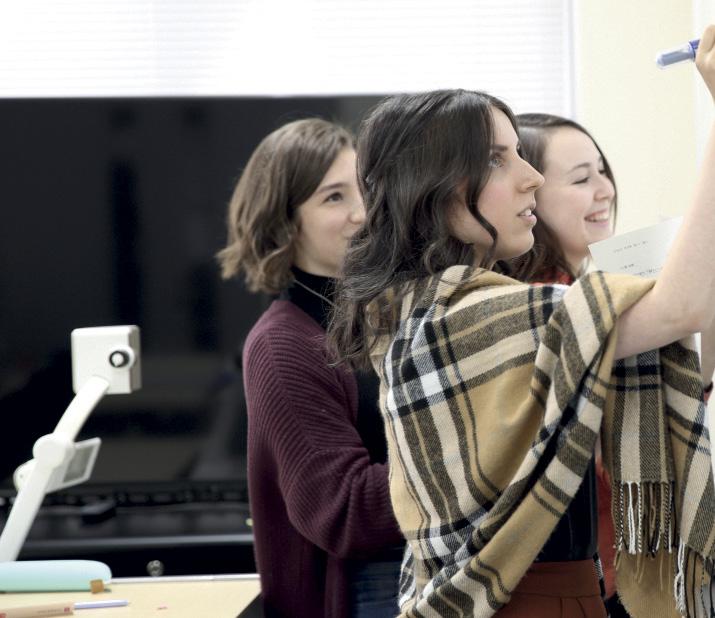
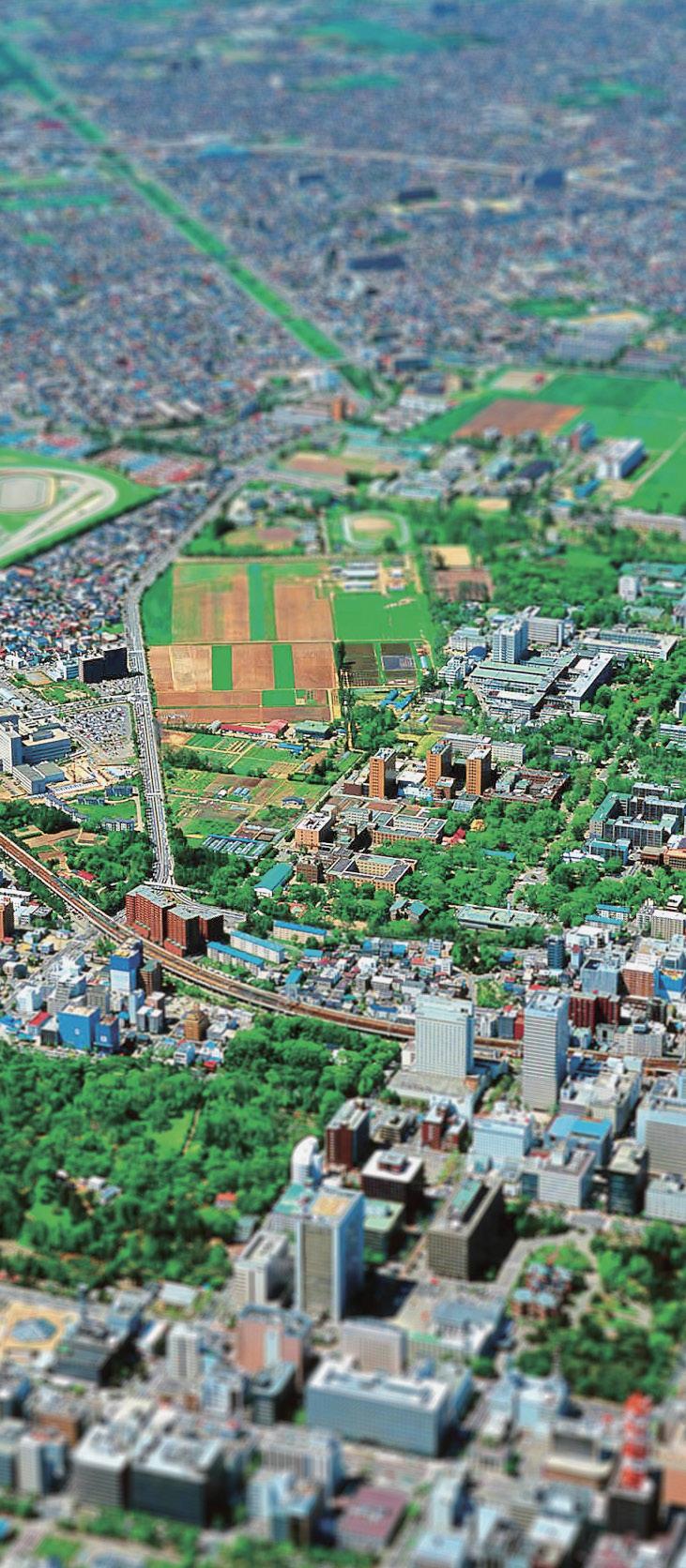
Founded in 1876 as Sapporo Agricultural College, Hokkaido University is one of the oldest, largest, and most prestigious universities in Japan. Boasting one of the largest campuses in Japan, the University houses cutting-edge research facilities, a university hospital, and several field research centers including one of the world’s largest research forests. Towards the 150th anniversary of its founding, Hokkaido University aims to be an unparalleled university that contributes to resolving global issues and realizing the SDGs.
the world

Visions for Hokkaido University
The Fourth Period of Mid-Term Goals and Mid-Term Plan, which commenced in 2022, is crucial to the future of the University, and coincides with the 150th anniversary of our founding. The University has developed six visions for this Period, in order to become an autonomous, comprehensive, community-based university. The visions encompass six categories — research, education, collaboration, management, data, and finances — where ambitious measures are being pursued. By linking these measures and categories, Hokkaido University will achieve a breakthrough in becoming an unparalleled university.
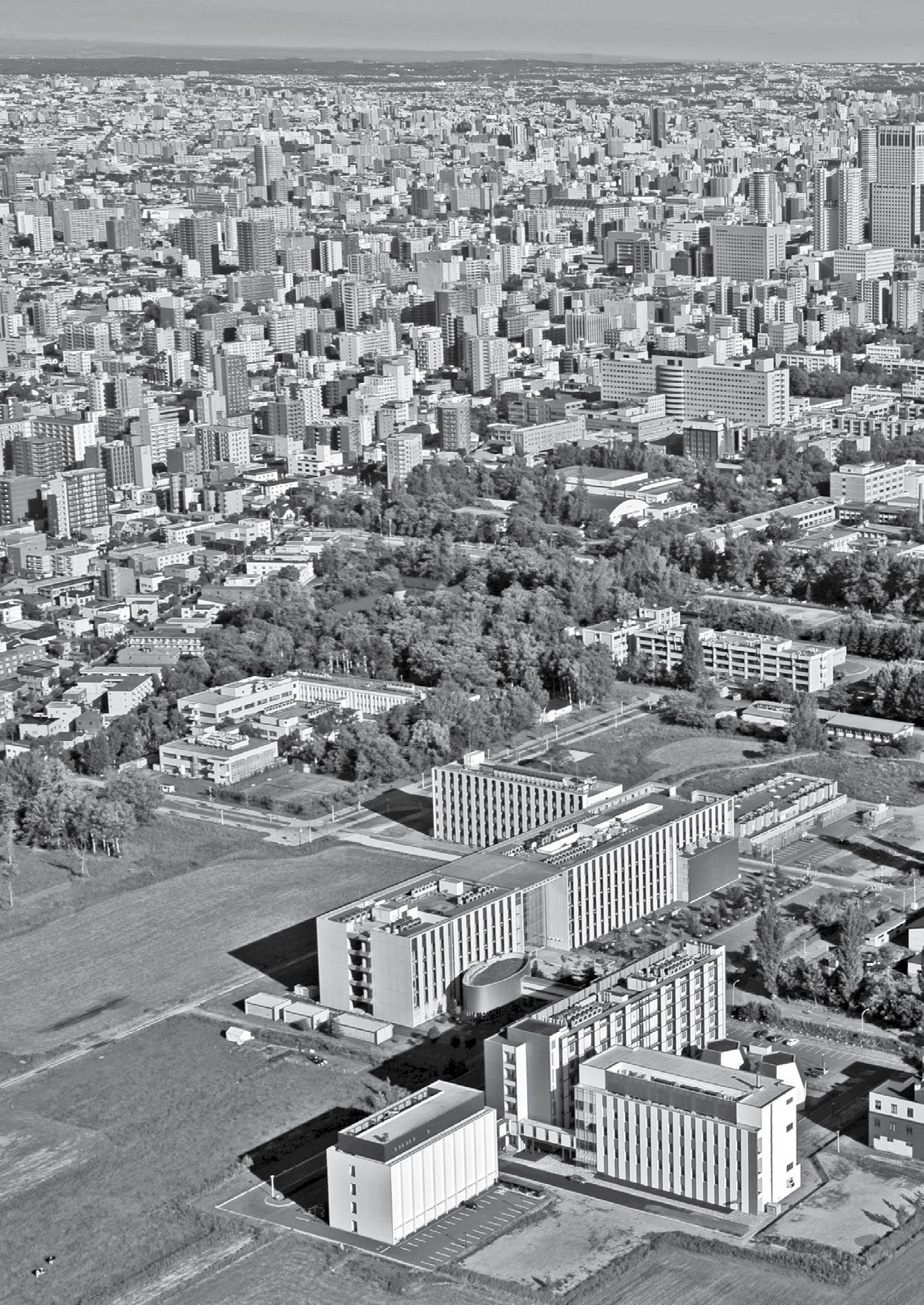
28 • HOKKAIDO
UNIVERSITY
Hakodate campus
Shining a light from Hokkaido upon
Sapporo campus
Research
Since its establishment as an agricultural college, Hokkaido University has expanded its research strengths to encompass a variety of fields in areas such as low temperature science, life sciences, chemistry, veterinary sciences, and fisheries sciences.

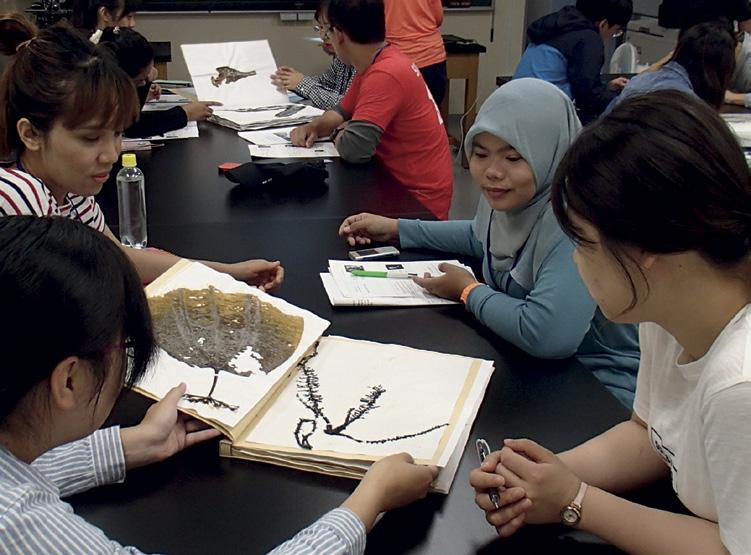

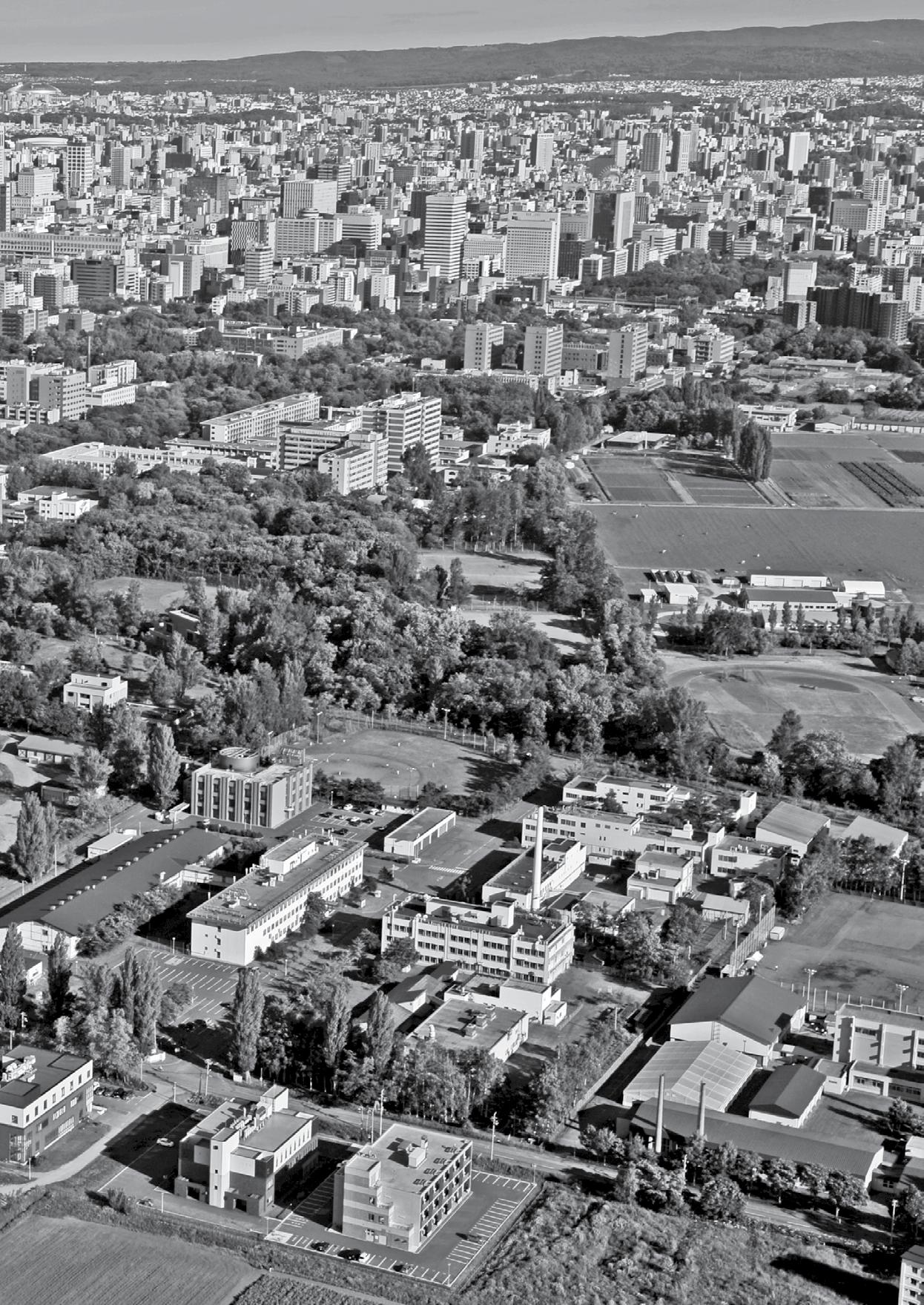
The Global Institution for Collaborative Research and Education (GI-CoRE), established in 2014 to conduct top-level research in strategic areas, has proven exceptionally successful. It now encompasses a total of eight programs, in fields ranging from Arctic Research to Zoonoses. The Institute for Chemical Reaction Design and Discovery (ICReDD), launched in 2018 as part of the World Premier Research Initiative (WPI) by the Japanese Government, has grown by leaps and bounds, and is now recognized as a pioneer in chemical reaction design.
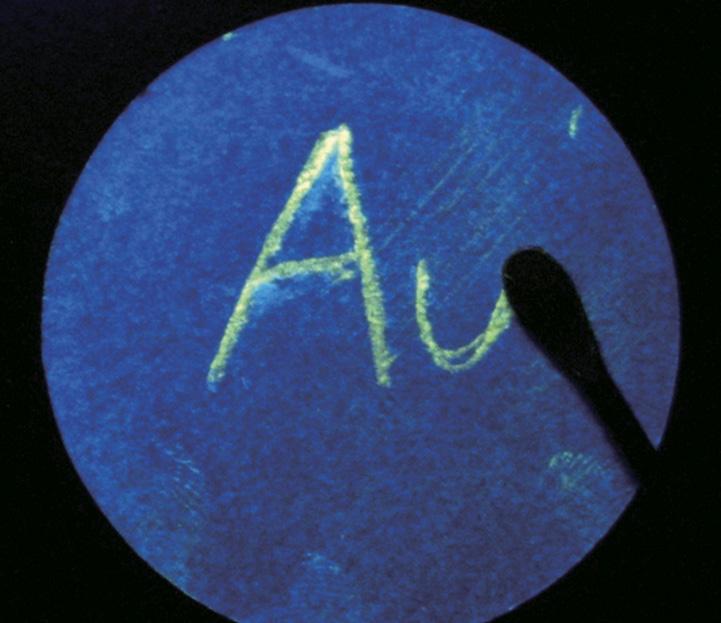


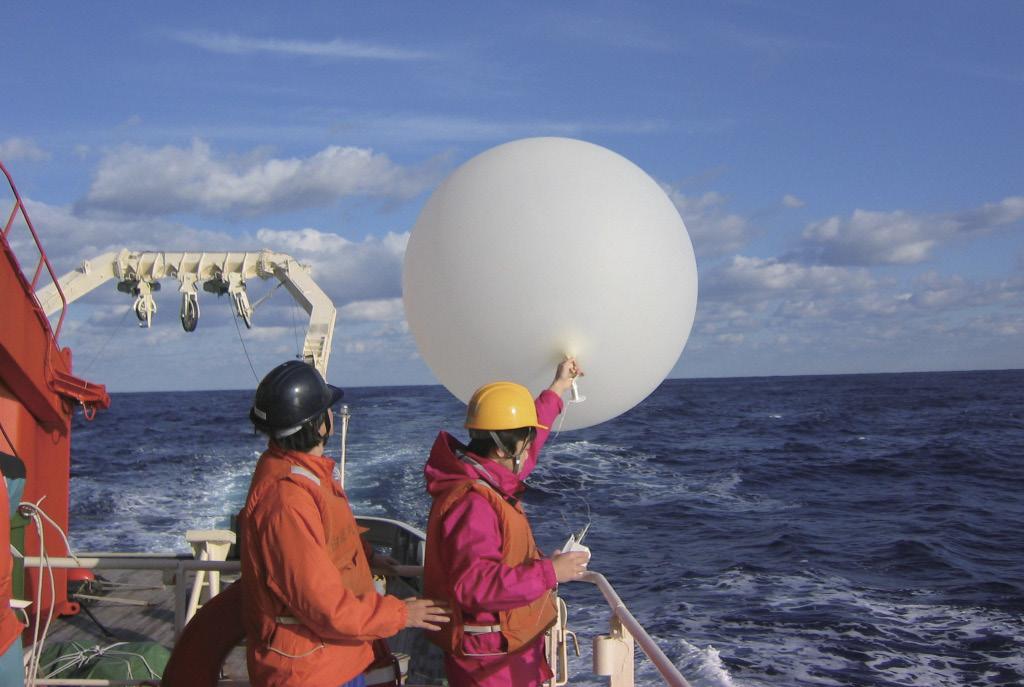
In 2022, Hokkaido University Professor Benjamin List won the Nobel Prize in Chemistry. He is the second Nobel Laureate affiliated with Hokkaido University, following Hokkaido University Professor Akira Suzuki, a 2010 laureate of the Nobel Prize in Chemistry.

HOKKAIDO UNIVERSITY • 29
In addition to the 12 undergraduate and 21 graduate schools, Hokkaido University runs a number of degree programs taught in English for international students. The Modern Japanese Studies Program and (MJSP) and the Integrated Science Program (ISP) are for undergraduate students; at the graduate level, there are eight specialized programs, and many graduate schools also offer courses in English.


During the summer, the Hokkaido Summer Institute (HSI) offers over 270 short programs in English covering a wide range of disciplines. The courses are run by top-level researchers from the University and around the world. A plurality of the HSI courses is now offered in a hybrid format, allowing a much more diverse group of students to enroll.






30 • HOKKAIDO UNIVERSITY HOKKAIDO UNIVERSITY AT A GLANCE
International Student Guide Hokkaido Summer Institute





12 undergraduate schools 660km2 total area of campuses and facilities 21 graduate schools 6th in Japan Times Higher Education Japan University Rankings 2022 30th in Asia QS World University Rankings 2023 7-8th in Japan 2022 Academic Ranking of World Universities 110th in the world 7th in Japan Nature Index 2022 — Academic Institutions
faculty & staff 18,094* students *Including 2,074 international students from 99 countries/regions 10th in the world Times Higher Education World University Impact Rankings **Including 838 International Staff 1876 established 5 overseas offices 237,532 alumni ***Located in 71 countries/regions 732*** partner institutions RANKING today Data as of May 2022 HOKKAIDO UNIVERSITY • 31 REVENUE ¥107,985m revenue in 2022 Research Grants, etc. 23.1% Facility Maintenance Grants 2% Miscellaneous 1.6% Tuition & Fees 9.7% University Hospital Earnings 30.1% Operational Grants 33.5%
3,917**
Founded in 1876 as Sapporo Agricultural College, Hokkaido University is one of the oldest, largest, and most prestigious universities in Japan. The university attracts prospective students from all around the globe with the diverse degree programs ofered and the year-round scenic beauty. The campuses are located in the cities of Sapporo and Hakodate of Hokkaido, and 21 facilities are spread throughout Hokkaido and mainland Japan.
 Sapporo Main Campus
Hokkaido Prefecture Hakodate Campus
Contact Institute for International Collaboration Public Relations Division Hokkaido University
Sapporo Main Campus
Hokkaido Prefecture Hakodate Campus
Contact Institute for International Collaboration Public Relations Division Hokkaido University
www.global.hokudai.ac.jp 2023.02
Kita 8, Nishi 5, Kita-ku, Sapporo, Hokkaido, Japan, 060-0808 pr@oia.hokudai.ac.jp



















































































































 Sapporo Main Campus
Hokkaido Prefecture Hakodate Campus
Contact Institute for International Collaboration Public Relations Division Hokkaido University
Sapporo Main Campus
Hokkaido Prefecture Hakodate Campus
Contact Institute for International Collaboration Public Relations Division Hokkaido University